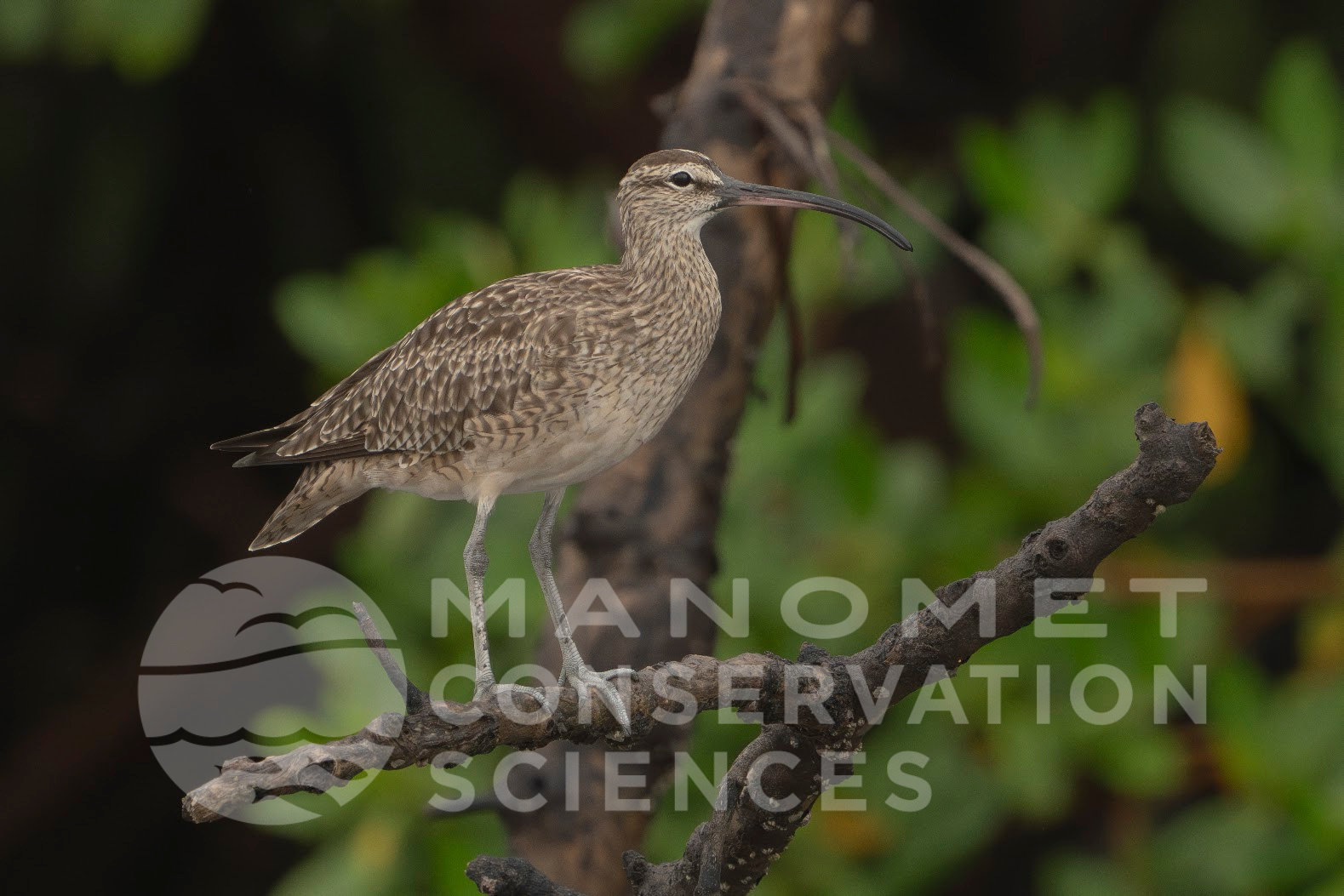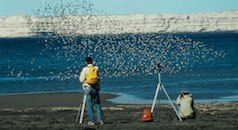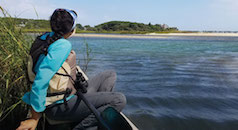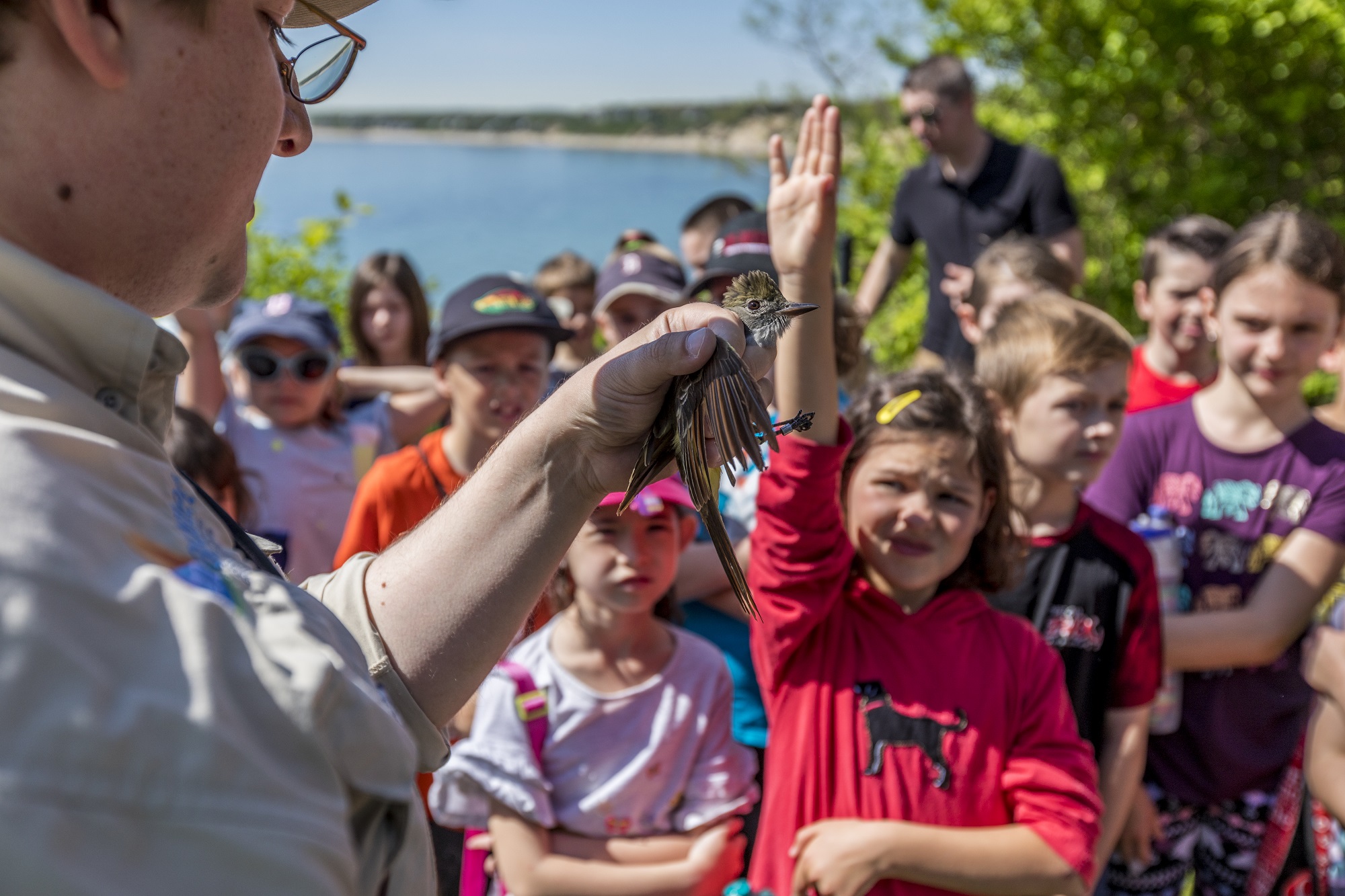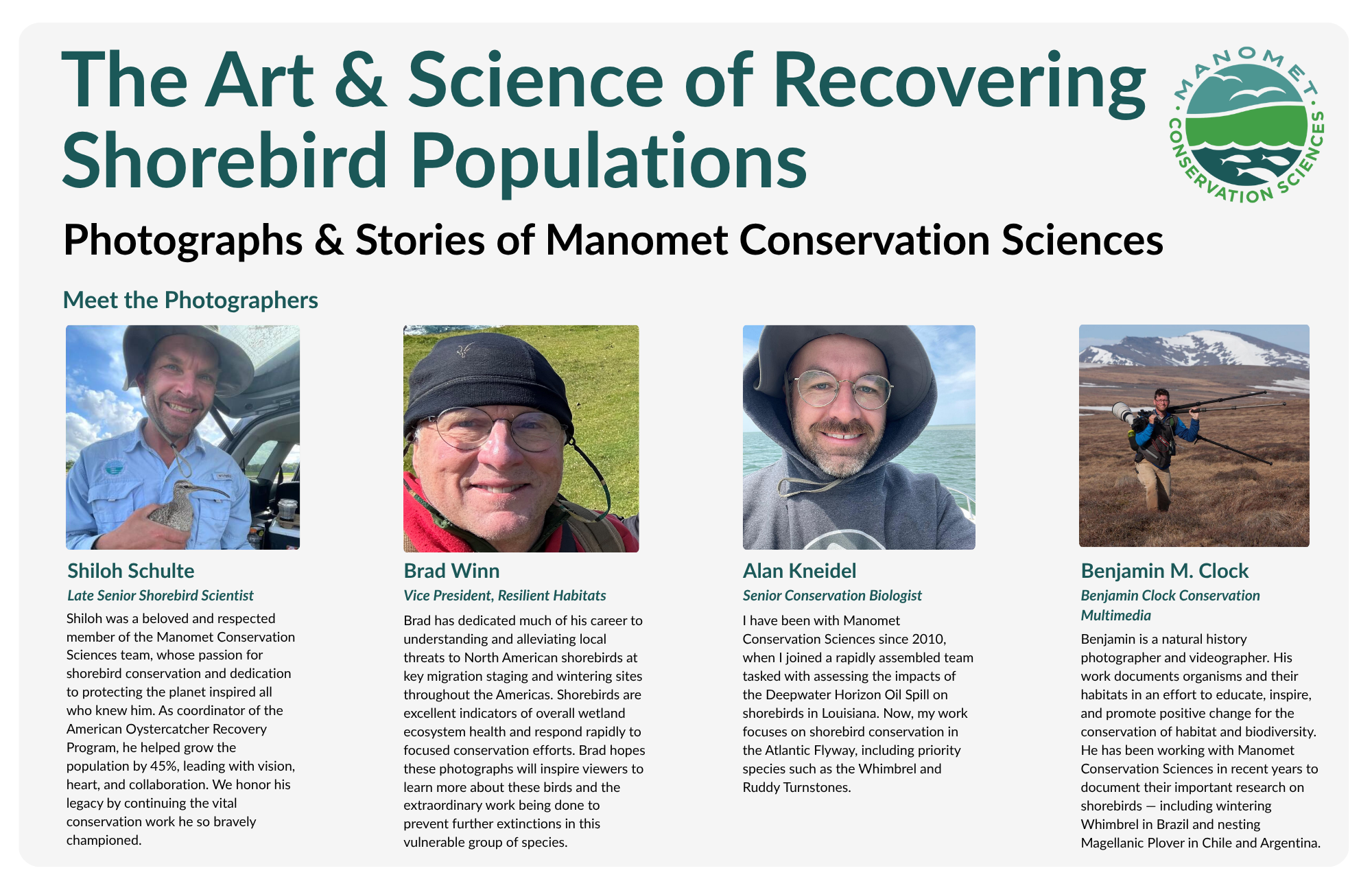
We are pleased to be able to offer you an opportunity to see the beautiful photographs taken by our scientists while in the field Below you can view a sneak peek of the photos that are on display. If you have any questions, please contact Amy Suveg at asuveg@manomet.org
#101: American Oystercatcher
Photographed: South Coast of Maine | Photographer: Shiloh Schulte
The American Oystercatcher is one of Manomet Conservation Sciences’ flagship species, selected for targeted conservation attention and elevated research focus.
The American Oystercatcher population has made a strong recovery in recent years, with a 45% increase across the U.S. since 2008. This success is largely thanks to the American Oystercatcher Recovery Campaign, a collaborative effort involving more than 40 conservation organizations. The campaign has focused on reducing human disturbance, managing hunting pressure, and protecting critical habitats. Shiloh Schulte led this effort by coordinating the American Oystercatcher Working Group, conducting aerial surveys of the entire U.S. coastline every five years, and securing funding to support partner organizations in their conservation work.
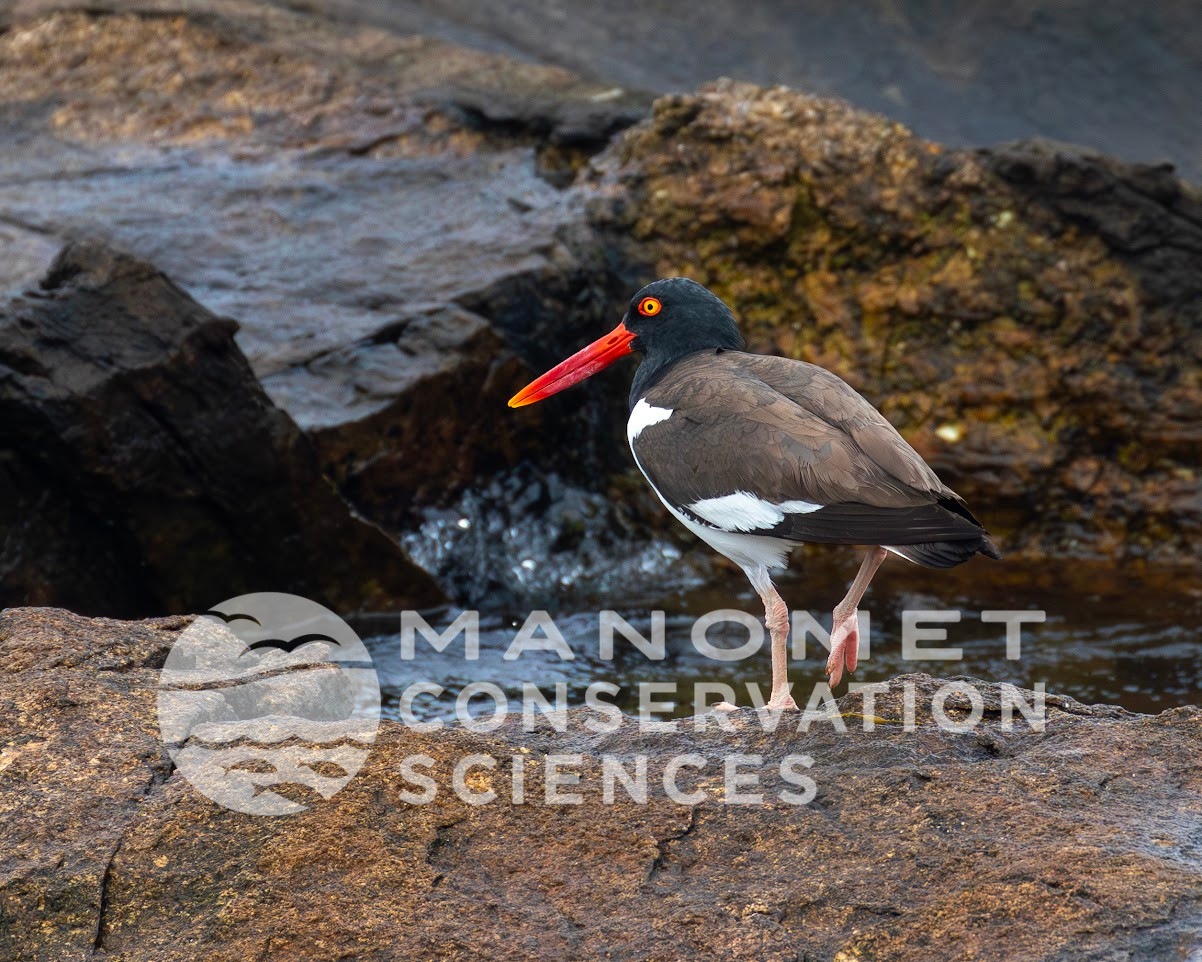
#102: Ruddy Turnstone
Photographed: Arctic National Wildlife Refuge, Alaska | Photographer: Shiloh Schulte
Ruddy Turnstones are one of Manomet Conservation Sciences’ flagship species, selected for targeted conservation attention and elevated research focus.
Ruddy Turnstones inhabit some of the most barren, high Arctic landscapes on Earth. Their nests are often found among the stone cobbles of old riverbeds or on nearby tundra. Their chisel-like beak is a versatile multi-tool, capable of piercing bird eggs or scavenging on carcasses. Closer to home in eastern North America, turnstones join the shorebird hordes that forage on the eggs of spawning horseshoe crabs from Georgia to Massachusetts.
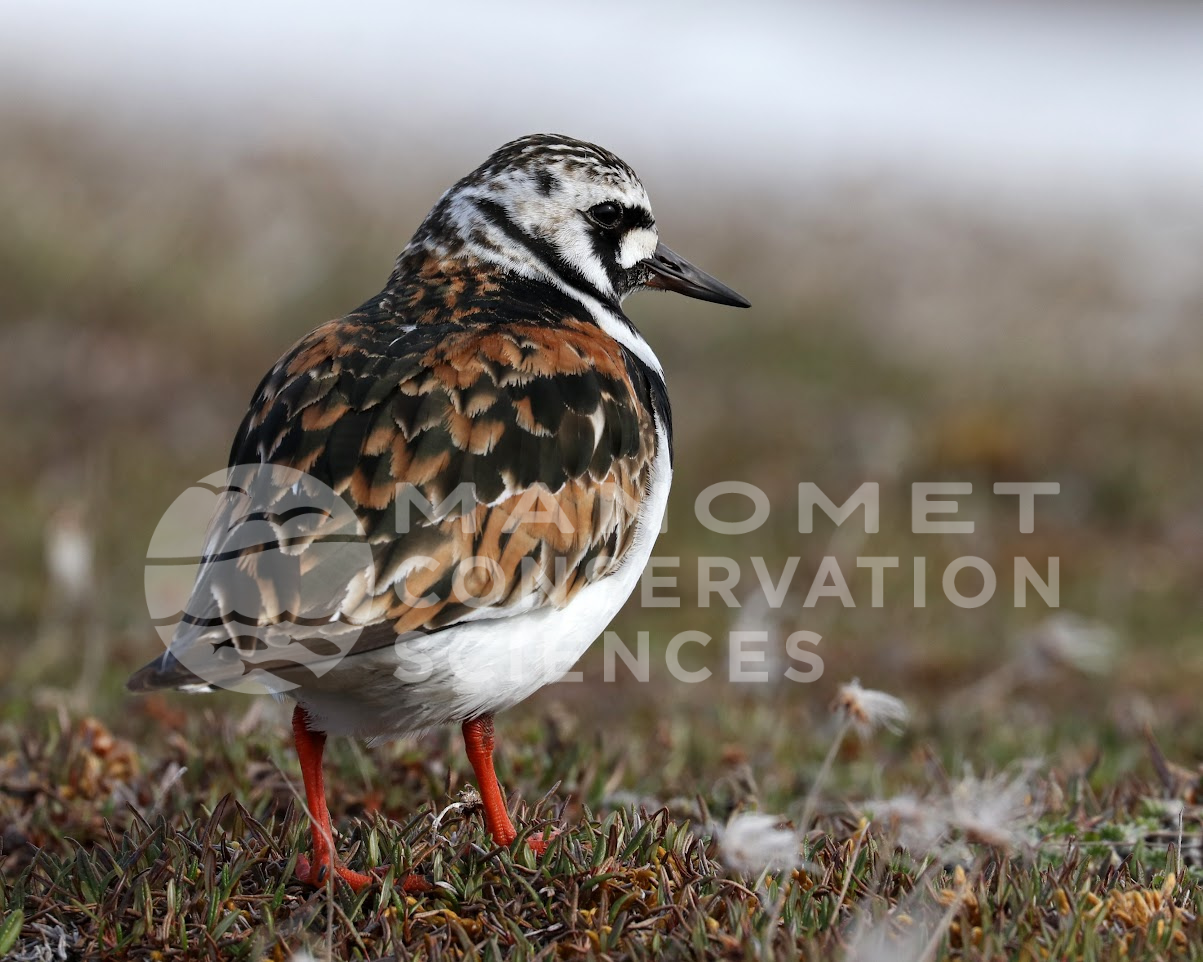
#103 Whimbrel
Photographed: Rockefeller Wildlife Refuge, Louisiana | Photographer: Shiloh Schulte
Whimbrel are one of Manomet Conservation Sciences’ flagship species, selected for targeted conservation attention and elevated research focus.
Each spring, thousands of Whimbrel pile into east Texas and southwest Louisiana on their way northward. While here, they capitalize on the abundance of crawfish found in the vast rice-crawfish agricultural landscape. Dispersed across suitable fields by day, the Whimbrels gather at communal night roosts that can number up to 10,000 birds. Manomet Conservation Sciences is collaborating with partners to identify these roost sites and develop a coordinated monitoring strategy to track their populations.

#104: American Golden-Plover
Photographed: Arctic National Wildlife Refuge, Alaska | Photographer: Shiloh Schulte
It’s always a highlight to come across the territory of a golden-plover. Although widespread in the Arctic, pairs are thinly distributed across the tundra, and in a full day of walking, a biologist may encounter only a few. The first sign you’re approaching a nest is often the sound of plaintive, agitated whistles. If you scan carefully, you’ll likely spot one of the pair standing alert, watching your every move. Golden-plover populations were decimated by unregulated hunting for restaurant markets in the late 1800s and early 1900s, and they have been slow to recover. Similar to the Buff-breasted Sandpiper, golden-plovers use the grasslands of the Southern Cone of South America—including cattle pastures—on their non-breeding wintering grounds, then funnel north through the Midcontinent in spring.
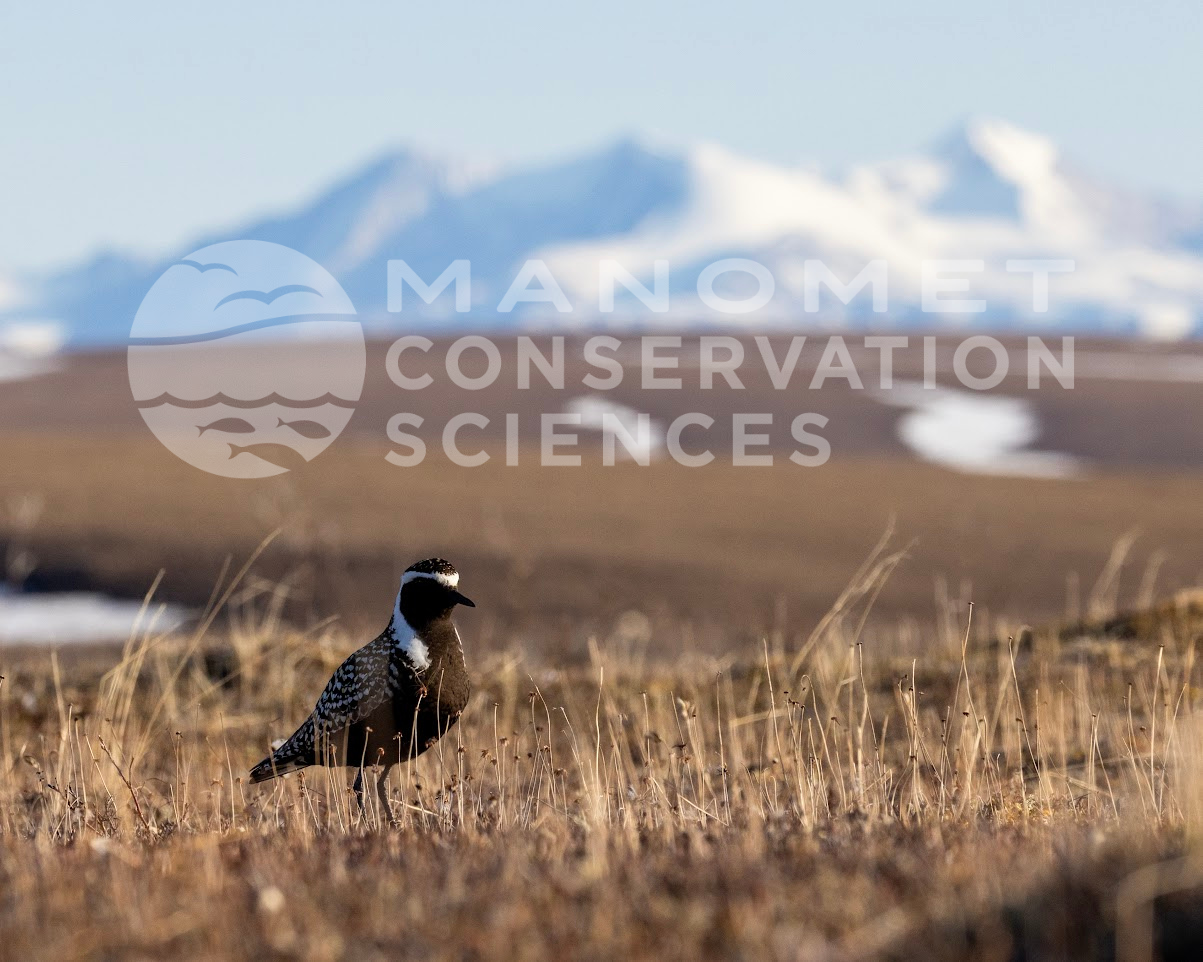
#105: American Golden-Plover on Nest
Photographed: Arctic National Wildlife Refuge, Alaska | Photographer: Shiloh Schulte
Once you see a golden-plover sitting on a nest, all the spectacular plumage details make perfect sense. The spangled gold and black blend seamlessly into the frost-boil tundra textures. In this photo, the ground is covered in white worm lichen (a favorite nest lining for the plover), purple mountain saxifrage, and the ever-present dryas, not yet in bloom.
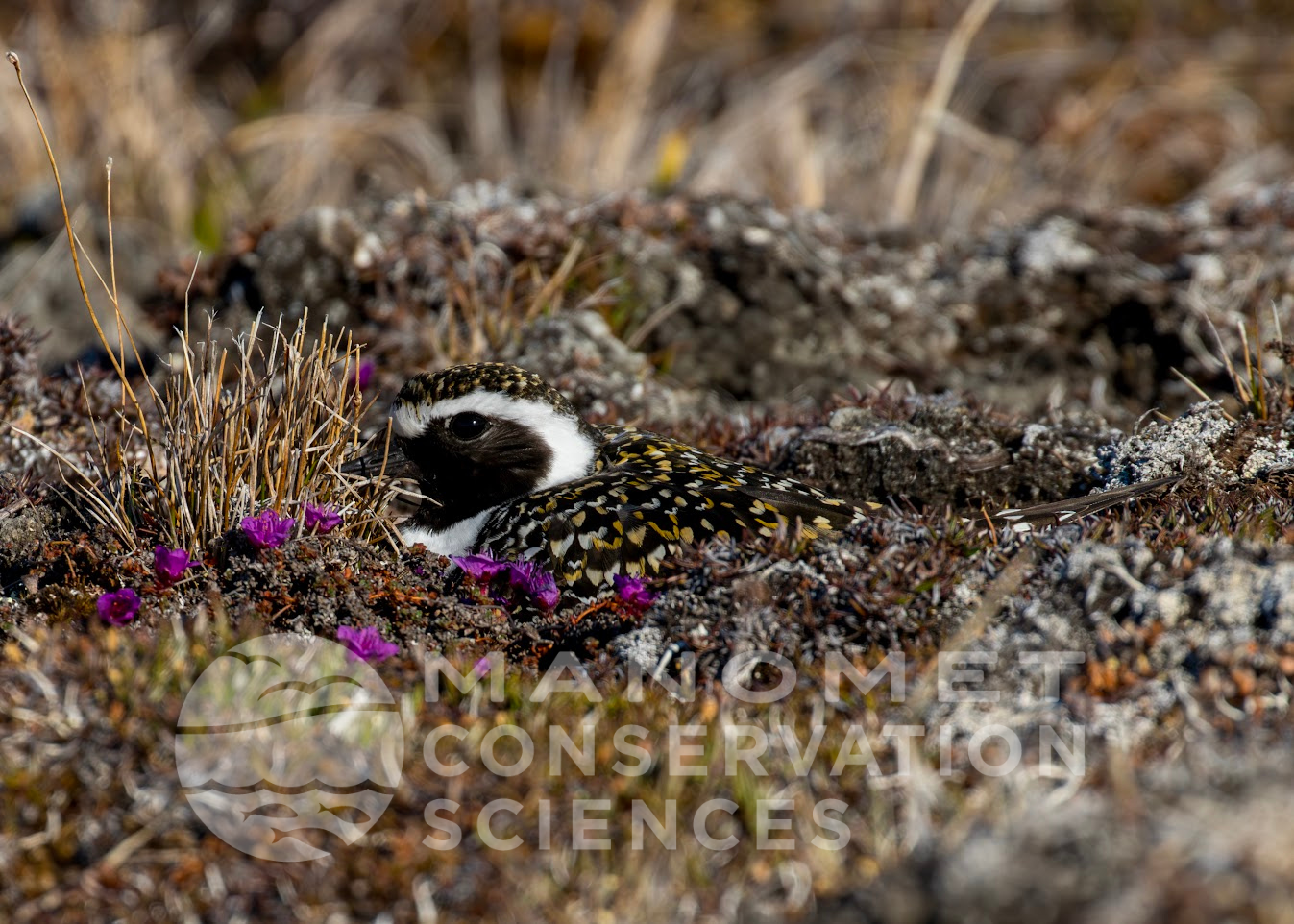
#106 Buff-breasted Sandpiper
Photographed: Arctic National Wildlife Refuge, Alaska | Photographer: Shiloh Schulte
Buff-breasted Sandpipers are one of Manomet Conservation Sciences’ flagship species, selected for targeted conservation attention and elevated research focus.
Though called a sandpiper, the Buff-breasted Sandpiper is a true grassland bird. Wintering in South America’s ranchlands, these “buffies” migrate through the Midcontinent Flyway, stopping to refuel in a variety of shortgrass habitats—both natural and human-made. With an estimated population of just 50,000, this species remains a key conservation priority for Manomet Conservation Sciences.
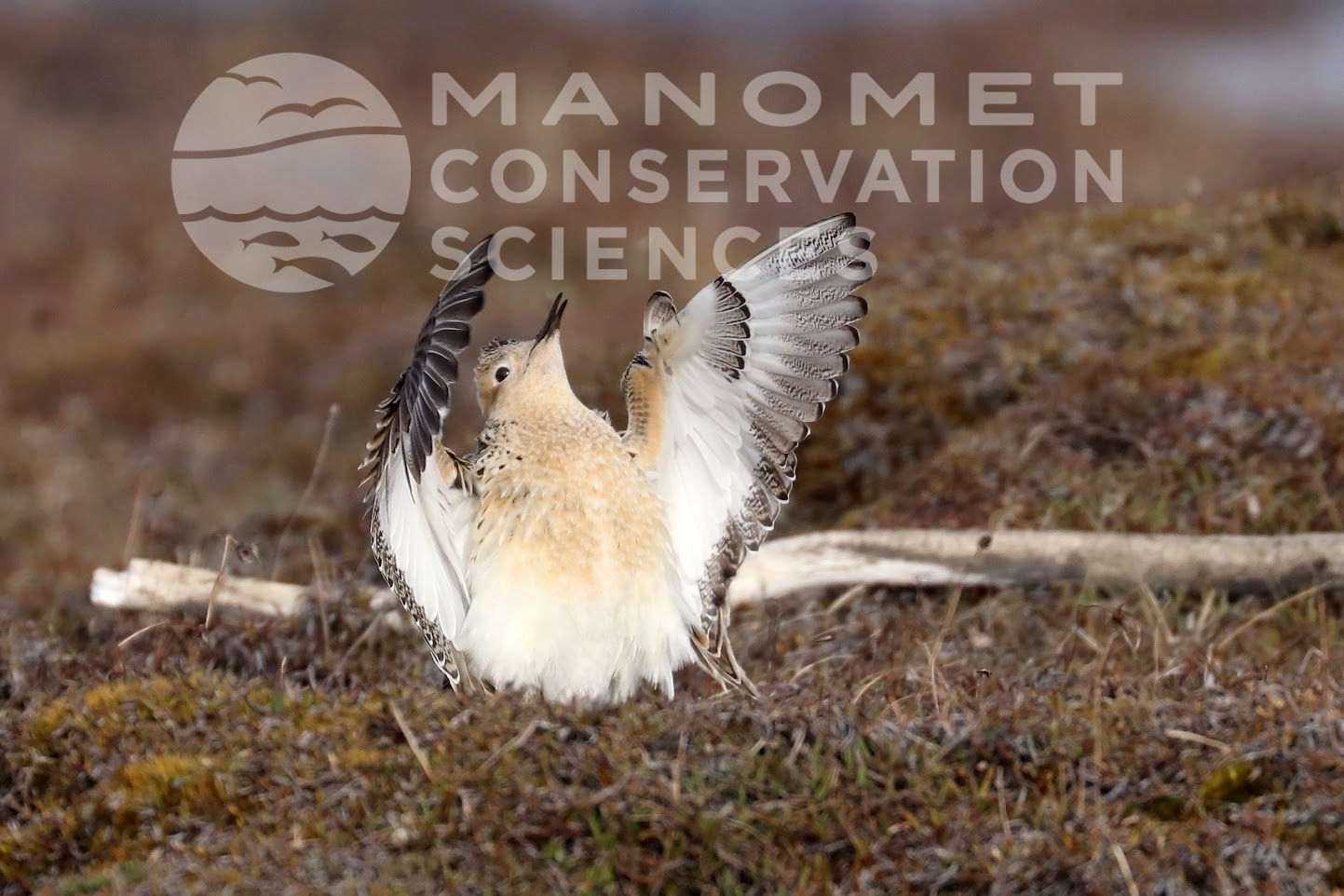
#107: Black-necked Stilt & Willet
Photographed: Texas Coast | Photographer: Shiloh Schulte
In April, the rice fields of Texas are a shorebird lover’s dream. Water is applied to a field multiple times each spring—first to germinate the seeds, and later again to help control weedy growth. As the water rushes across the land, shorebirds key in on it almost instantaneously, foraging on invertebrates big and small. After a few hours, it’s possible to find up to 20 species in a single field, with total numbers in the thousands. After a few days, the field begins to dry up, and the birds move on to the next field.
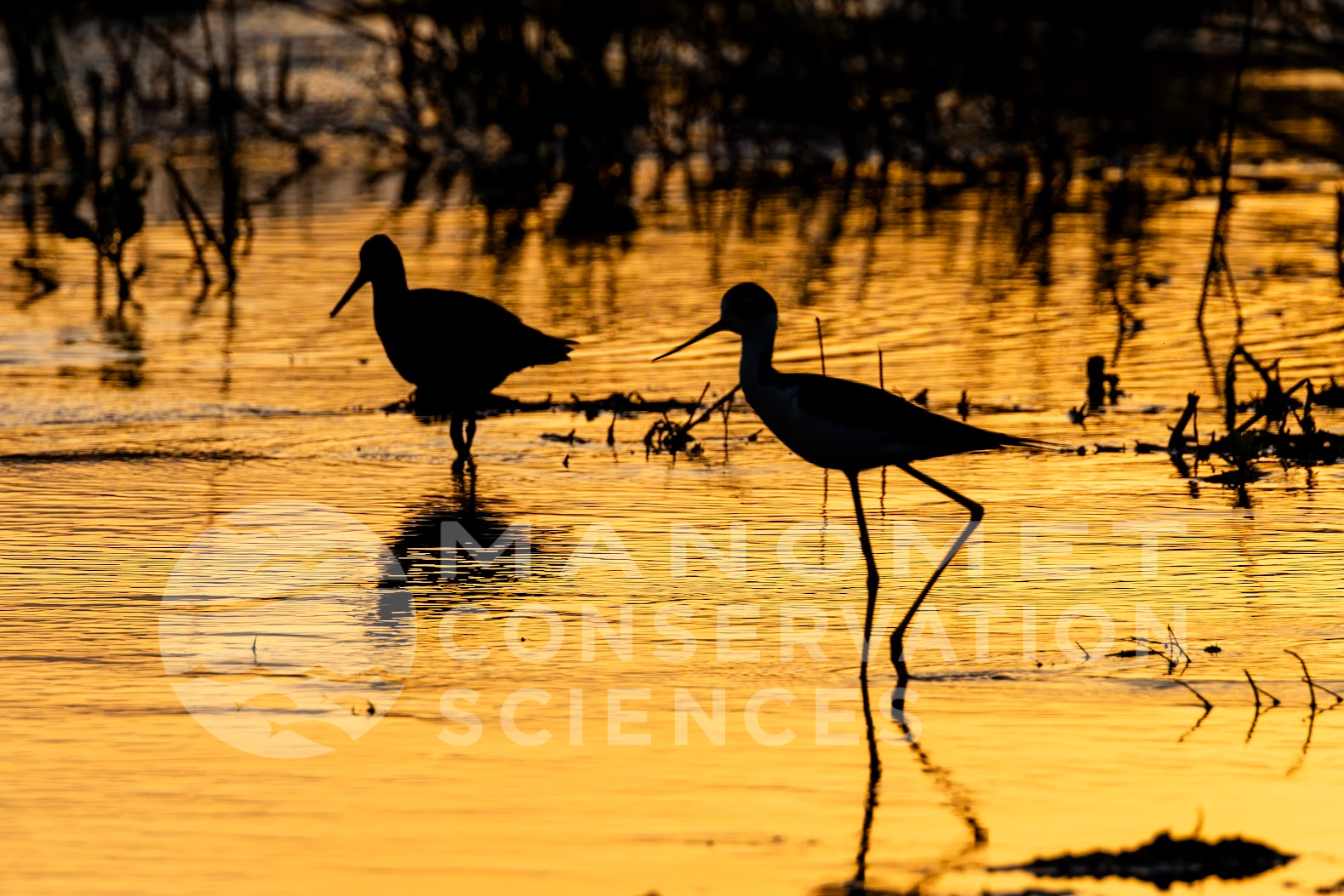
#108: Black-necked Stilt
Photographed: Arctic National Wildlife Refuge, Alaska | Photographer: Alan Kneidel
This striking male Black-necked Stilt strode confidently across a flooded lawn at a remote research station, sharing the shallow water with Lesser Yellowlegs, a Short-billed Dowitcher, and a pair of Spotted Sandpipers. With its impossibly long pink legs and bold black-and-white plumage, the stilt is one of the most unforgettable shorebirds in the Americas, common across the southern U.S. and into the tropics. After a long day scouting for Whimbrel, I was more than happy to drop to the ground, camera in hand, and see just how close this elegant bird might wander toward me.

#109: Dunlin
Photographed: Controller Bay, Alaska | Photographer: Alan Kneidel
The Chugach Mountains provide a dramatic backdrop for Controller Bay, an important stopover site for northbound shorebirds. Manomet Conservation Sciences recently collaborated with local partners in Alaska to study the significance of this site for Red Knots through leg-flag resighting and shorebird surveys. The two most abundant species in the bay during May are Western Sandpipers and Dunlin.
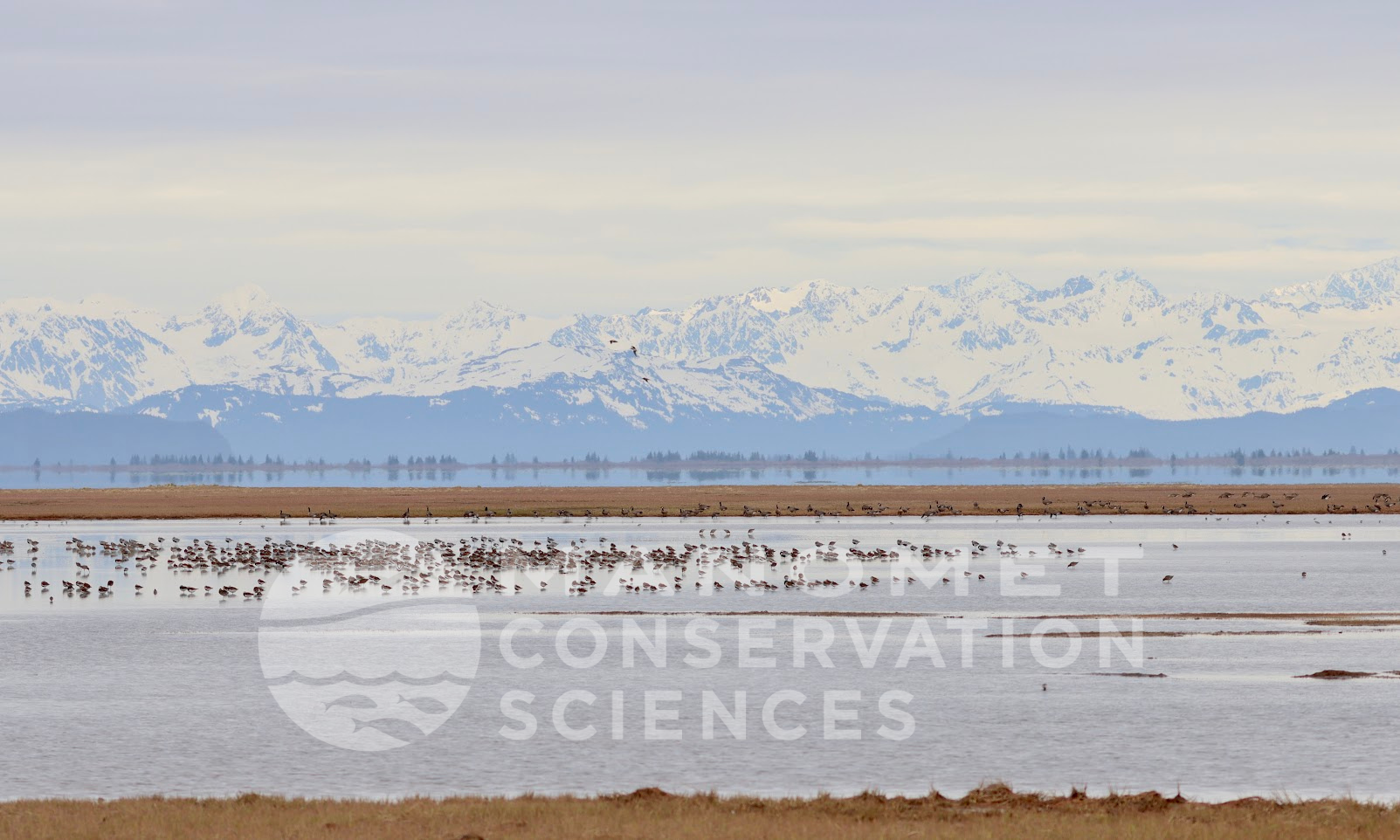
#110: White-rumped Sandpiper
Photographed: Monomoy National Wildlife Refuge, Massachusetts | Photographer: Alan Kneidel
By October, strong coastal storms are a regular occurrence in New England. Dubbed “Nor’easters,” these storms bring high winds that blast sand across the dunes of the Cape. The day after one such storm, I was out on Monomoy conducting an International Shorebird Survey—the winds had subsided, and all was calm. At the high-tide roost, the shorebirds were fastidiously stretching and preening to dislodge sand that had infiltrated their spiffy plumage. This White-rump Sandpiper, aged as a juvenile by its uniformly fresh feathers, hails from an Arctic home where it hatched just a few months earlier. Next stop? Southern South America via a trans-Atlantic flight.
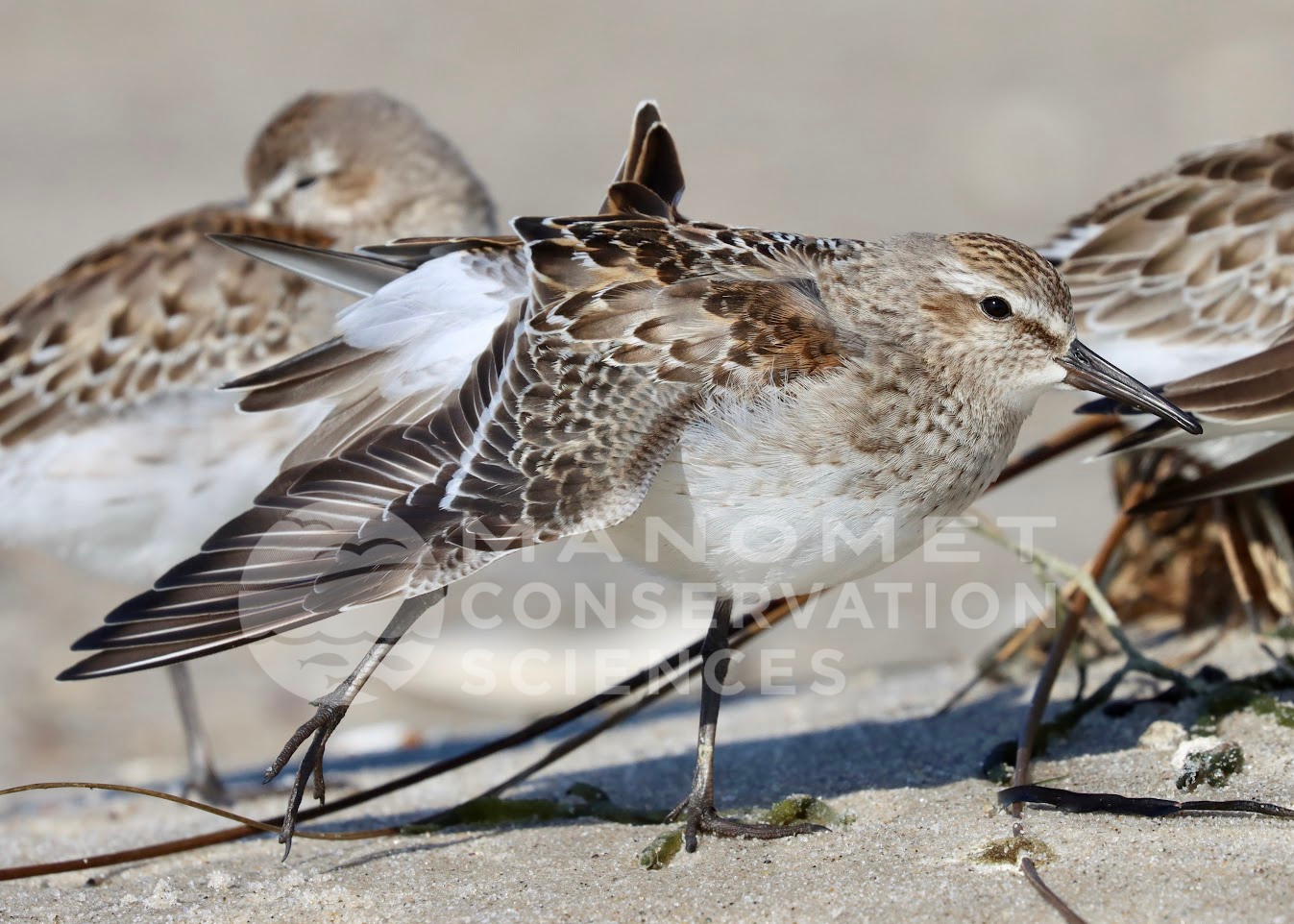
#111: Red Phalarope
Photographed: Arctic National Wildlife Refuge, Alaska | Photographer: Alan Kneidel
Red Phalaropes nest in the wet, low-lying tundra, weaving their nest cups into last year’s grass. Unusual among shorebirds, it’s the males that incubate the eggs—a trait linked to their polyandrous mating system. As a result, males have duller, more camouflaged plumage, while females are more brightly colored. After the breeding season, Red Phalaropes migrate to the open ocean, where they gather in large flocks and feed on marine invertebrates.
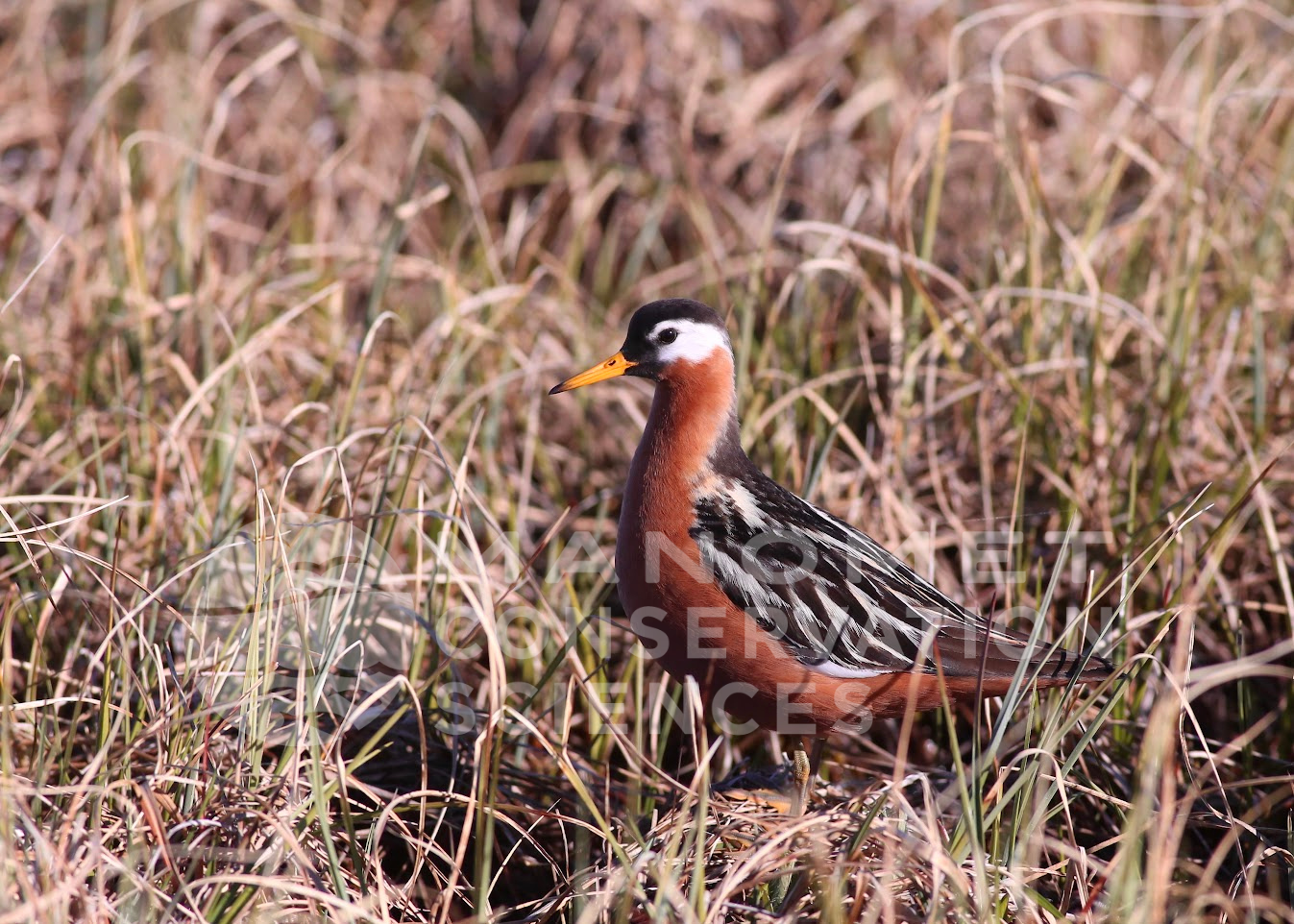
#112: Semipalmated Sandpiper
Photographed: Monomoy National Wildlife Refuge, Massachusetts | Photographer: Alan Kneidel
Southbound flocks of Semipalmated Sandpipers descend on northeastern North America as early as July from nesting sites across the North American Arctic, peaking in the tens of thousands during August. At Monomoy National Wildlife Refuge, sandpipers have abundant habitat available—both mudflats for foraging and sandy ridges for roosting. In this photo, a Peregrine Falcon was racing through the flock, hoping to pick off a straggler.
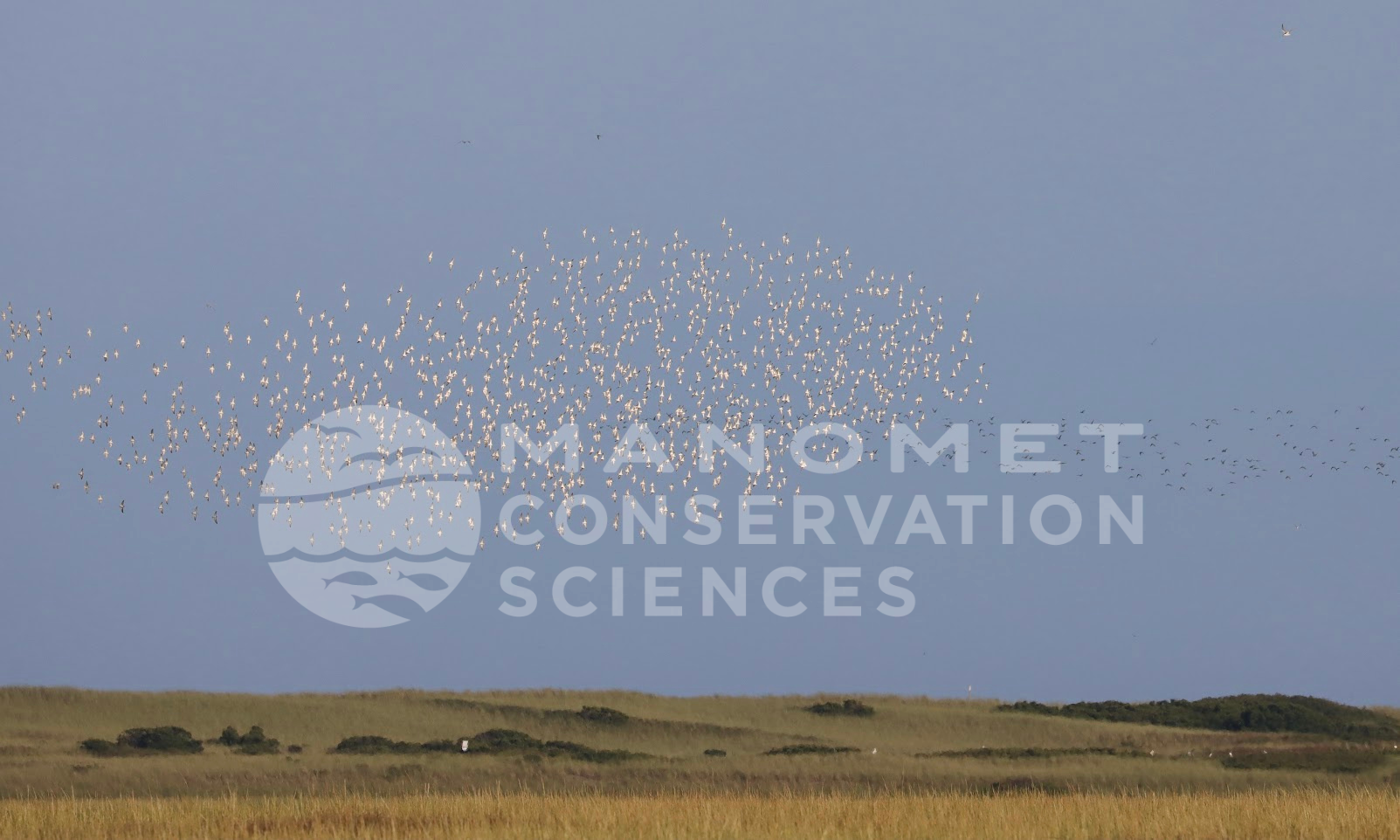
#113: Bristle-thighed Curlew
Photographed: Controller Bay, Alaska | Photographer: Alan Kneidel
The Bristle-thighed Curlew is a rare Alaskan breeder that spends its winters on remote tropical Pacific islands. With a global population estimated at fewer than 10,000 individuals, every sighting is a remarkable event. This particular bird made a brief stop on the mudflats of Controller Bay, just a few hundred miles south of its nesting grounds. After a short rest, it continued its journey. Though similar in appearance to the Whimbrel, the Bristle-thighed Curlew can be distinguished by its tan-colored rump and unique vocalizations—key traits that set these two closely related species apart.

#114: Sanderling
Photographed: Monomoy National Wildlife Refuge, Massachusetts | Photographer: Alan Kneidel
A migratory flock of Sanderling wheels about the outer beach of Monomoy before settling into a high tide roost. Sanderlings have the broadest wintering range of any American shorebird species, with populations ranging from New England all the way to southern South America on both the Atlantic and Pacific coasts. That expansive range creates a long migration window: some birds bound for South America pass through as early as July, while those wintering closer to home in the Northeast arrive later in the season.

#115: Solitary Sandpiper
Photographed: Big Bay, Michigan | Photographer: Brad Winn
While many shorebirds display some level of gregarious behavior outside the breeding season, Solitary Sandpipers live up to their name—they’re true loners. During migration, they favor small, isolated ephemeral wetlands rather than larger, more communal habitats. In 2023, Manomet Conservation Sciences’ survey of the Amazon River Basin recorded a surprising number of these elusive birds, suggesting that the Brazilian state of Amazonas may serve as a key wintering area for this widely dispersed species. Solitary Sandpipers are equally difficult to study on their breeding grounds, tucked deep within the dense swamps and bogs of Canada and Alaska’s boreal forests.

#116: Curlew Sandpiper
Photographed: Utqiagvik, North Slope Borough, Alaska | Photographer: Brad Winn
This sandpiper was far outside its typical breeding range in Arctic Russia when we spotted it along Alaska’s north coast. Though rare in North America, this species appears annually—especially in Alaska, where this individual was discovered by a Manomet Conservation Sciences’ birding group. Remarkably, another was recently found by Manomet Conservation Sciences biologists at Monomoy National Wildlife Refuge on Cape Cod.
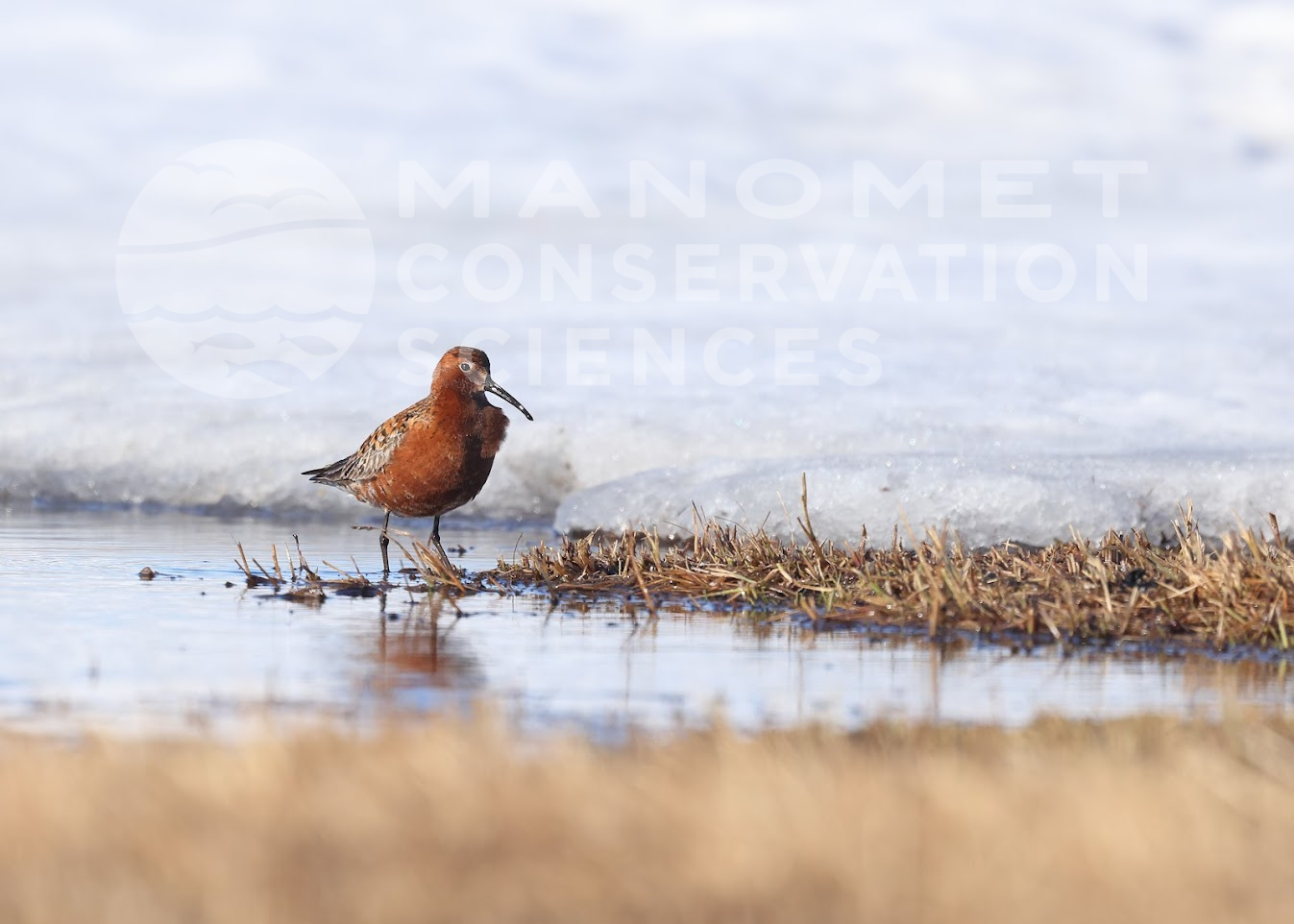
#117: Long-billed Curlew
Photographed: Altamaha River Estuary, Georgia | Photographer: Brad Winn
The curlew in this photo is a survivor. It belongs to a group of perhaps as few as twenty individuals that spend the colder months in South Carolina, Georgia, and Florida. Long-billed Curlews were historically very abundant in fall, winter, and early spring along the southeastern US Atlantic Coast before the late 1800s. Unregulated hunting and the sale of many bird species for the meat and feather industries between 1850 and 1930 drove many species to imperilment or extinction—obliterating some completely, like the now-extinct Eskimo Curlew, Passenger Pigeon, and Carolina Parakeet. Long-billed Curlews, the largest shorebirds in all the Americas, exist in greater numbers breeding in our western states and the Canadian provinces of Saskatchewan and Manitoba, but the bird in this photograph is a mere relic of a very different time.
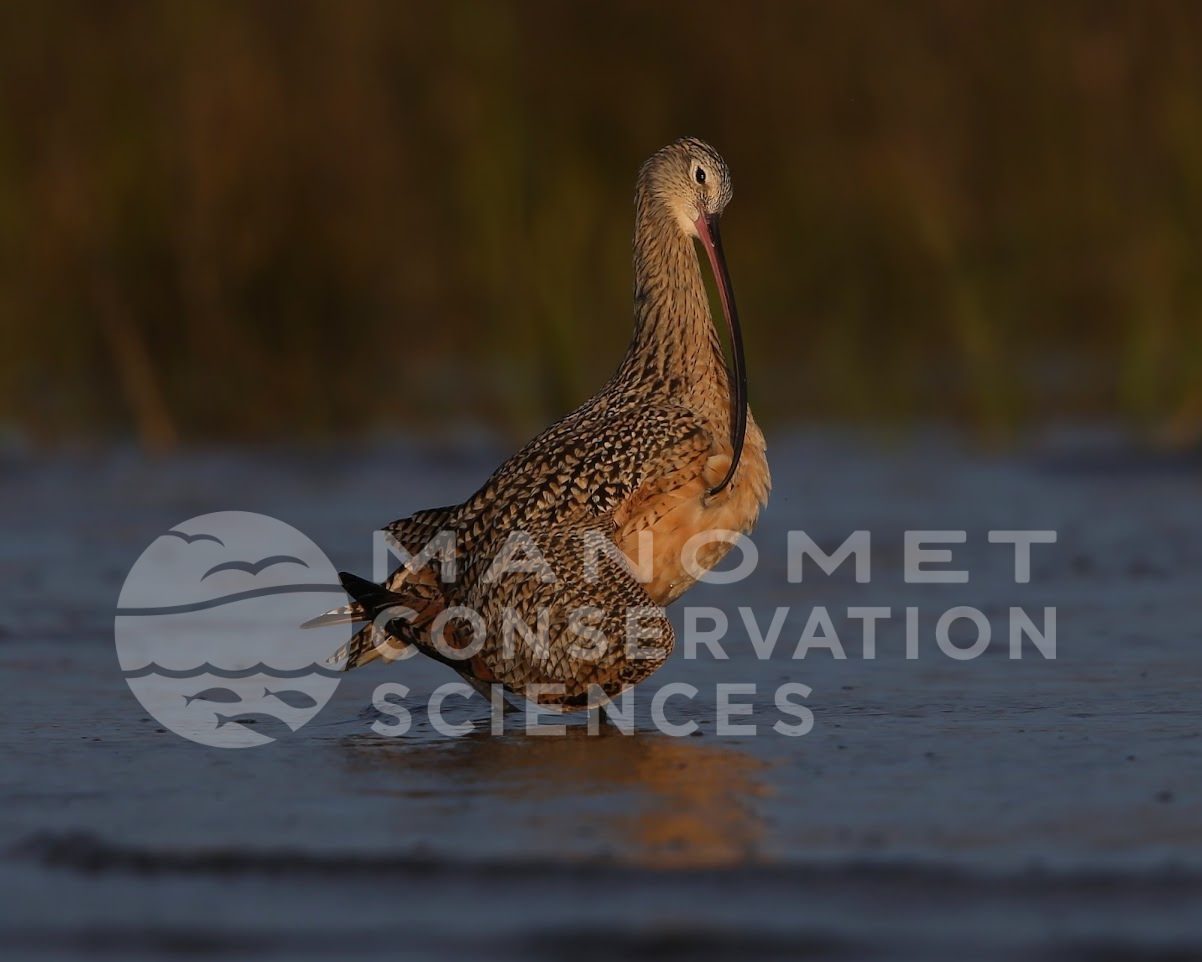
#118: Buff-breasted Sandpiper (Calidris subruficollis)
Photographed: Shifting Lots Preserve, Ellisville, Massachusetts | Photographer: Brad Winn
Buff-breasted Sandpipers are one of Manomet Conservation Sciences’ flagship species, selected for targeted conservation attention and elevated research focus.
The Buff-breasted Sandpiper is a bird of grassland habitats, including tundra, open fields, dune grasses, and pothole prairielands. Wintering in the ranchlands and Pampas Steppe of South America, “buffies” migrate through the Midcontinent Flyway, stopping over in a variety of shortgrass habitats, both man-made and natural. Eastern states are regularly visited by this species, typically juveniles, as they migrate to the Southern Cone of South America. With an estimated population of 50,000, this species is a conservation priority for Manomet Conservation Sciences, with research ongoing throughout its migration range.
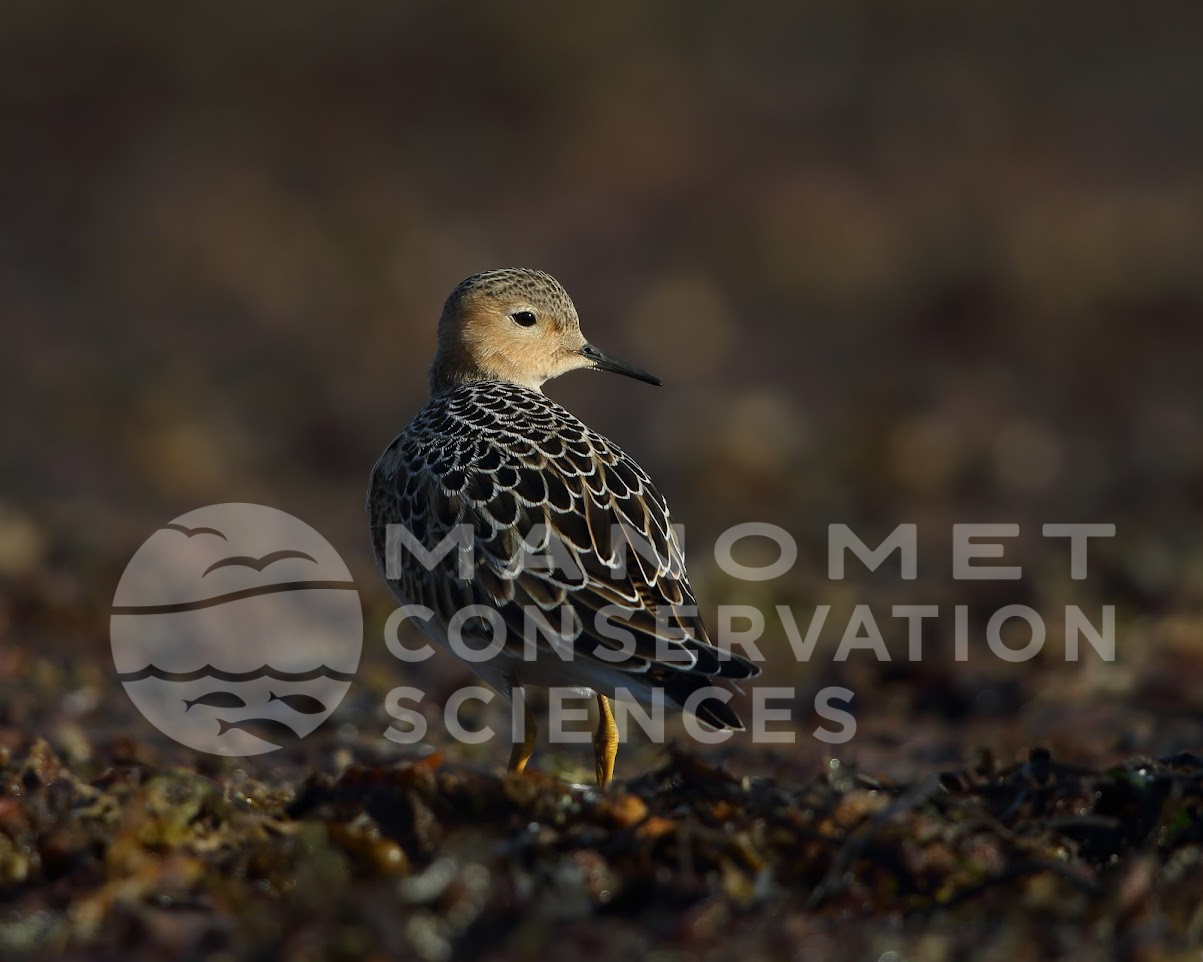
#119: Whimbrel (Numenius phaeopus)
Photographed: Monomoy National Wildlife Refuge, Massachusetts | Photographer: Brad Winn
Whimbrel are one of Manomet Conservation Sciences’ flagship species, selected for targeted conservation attention and elevated research focus.
On southbound migration, several hundred adult Whimbrel stop over for about a month on the outer Cape Cod coast. Whimbrel disperse to daytime feeding sites in the saltmarshes of eastern Massachusetts and return to roost communally at night on specific, isolated sandspit islands in the Monomoy National Wildlife Refuge.
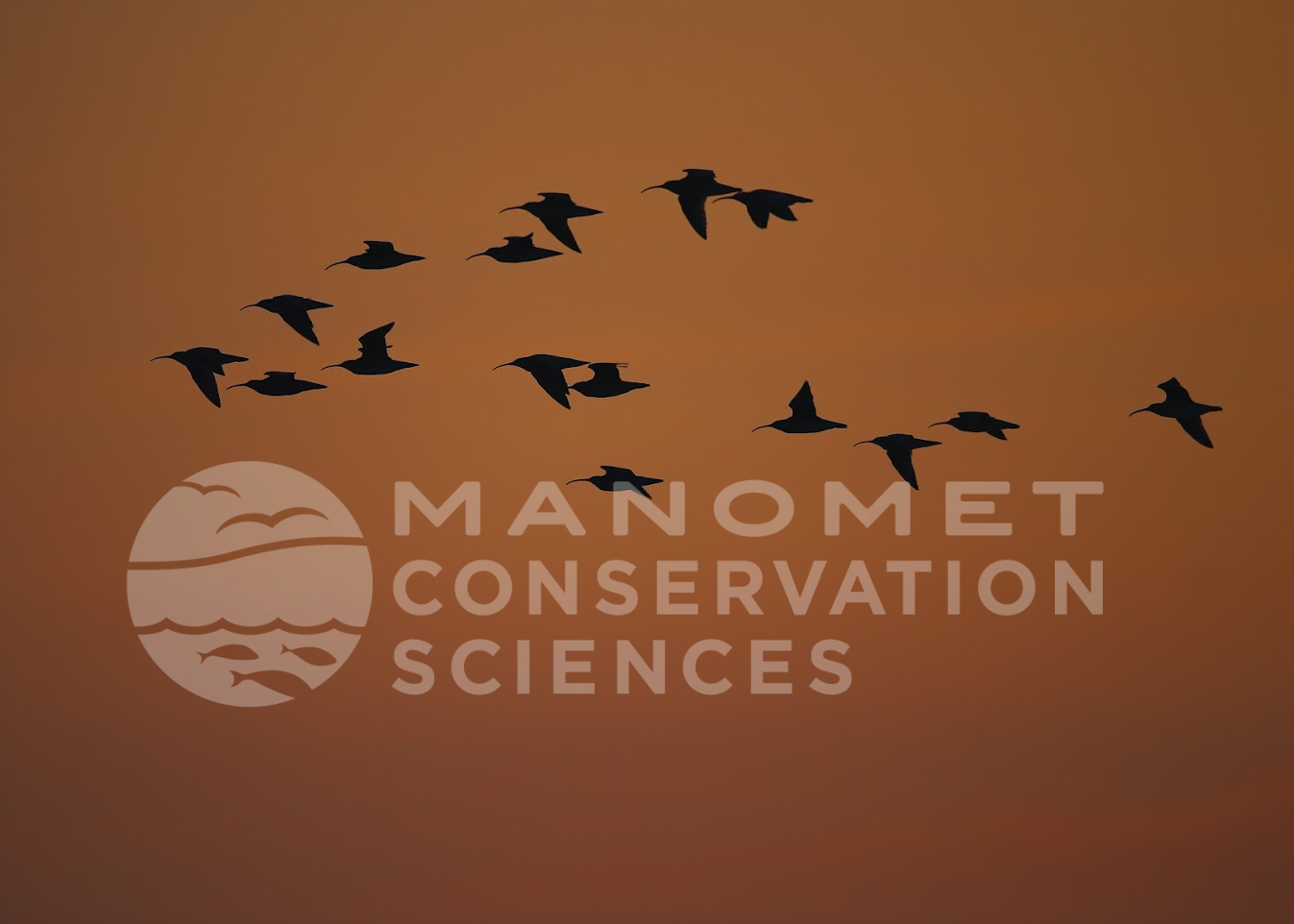
#120: American Golden-Plover (Pluvialis dominica)
Photographed: Amazon River Basin, State of Amazonas, Brazil | Photographer: Brad Winn
This young bird was spotted on the banks of a slowly drying tributary of the Amazon River, feeding on any creatures wiggling in the muddy shoreline. It had journeyed from its Arctic tundra nesting grounds and was en route to its non-breeding habitat in the grasslands of southern Argentina, Uruguay, and Brazil. Once hunted to near extinction right here in New England—at a time when there were no regulations on hunting migratory birds—the American Golden-Plover has made a slow, partial comeback over the last hundred years. Unfortunately, it now faces new threats, including habitat loss and ongoing hunting in parts of South America.
In the late 1800s and early 1900s, the commercial shooting of birds for sale to restaurants devastated shorebirds along both the East Coast and the Midcontinent Flyways. One migration-route companion of these plovers, the Eskimo Curlew (Numenius borealis), was once immensely abundant and is now considered extinct. Manomet Conservation Sciences and its partners are working hard to ensure other shorebird species don’t follow the same path.
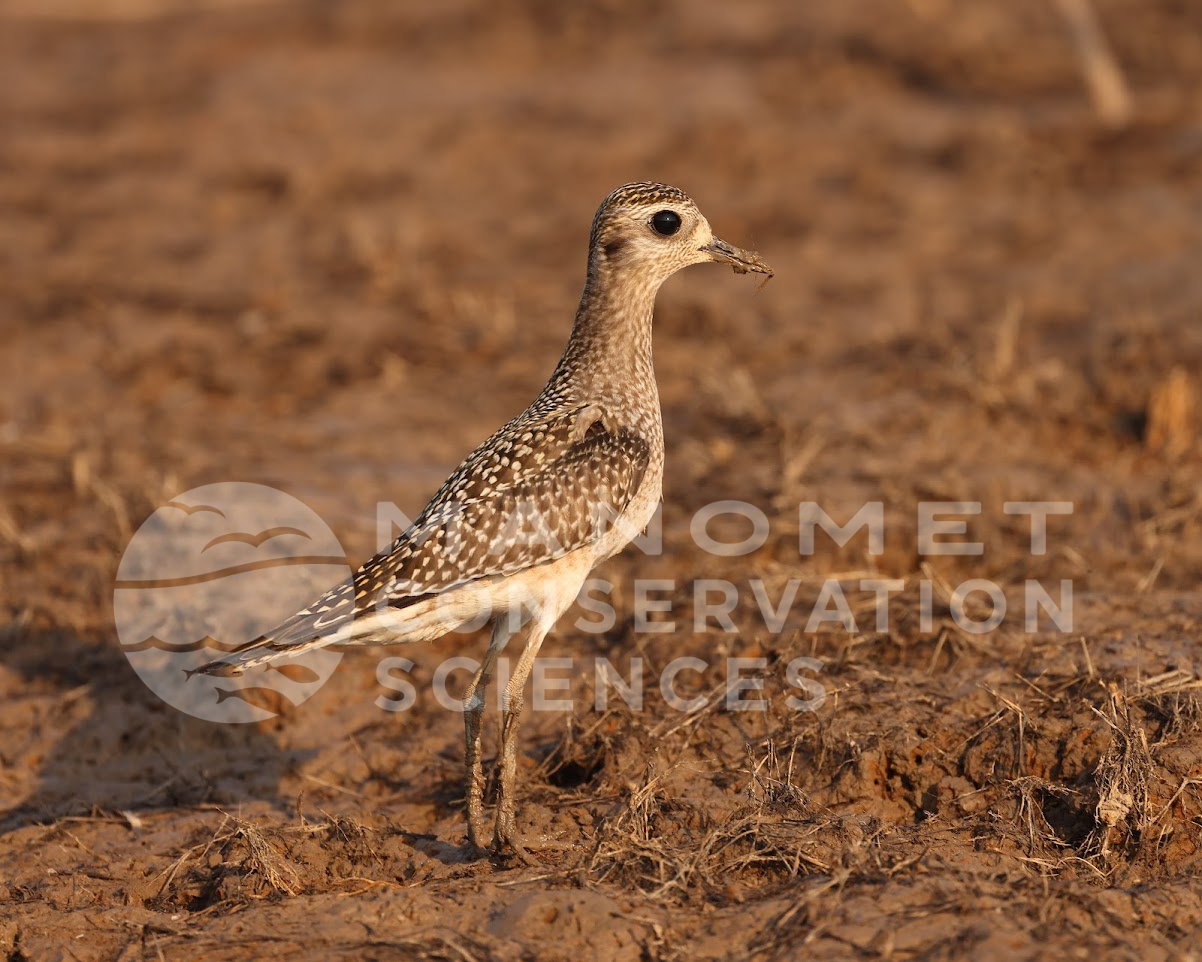
#121: Bar-tailed Godwit
Photographed: Cape Krusenstern National Monument, Alaska | Photographer: Brad Winn
Photographed in the morning light, this flock appeared to have just come off the Bering Sea to land on the Alaskan coast for rest and feeding. Their flight likely originated from a staging area on the mudflats of the Yellow Sea in China. The Yellow Sea is just one stop along their full northward migration from the coasts of New Zealand, where they spend about eight months on their coastal wintering grounds.
Bar-tailed Godwits have been tracked making the longest non-stop migration flight of any bird species—leaving the Yukon Delta in Alaska in September and flying for nine straight days to New Zealand. Their northbound journey is slower, with critical feeding and resting time spent in the rich intertidal flats along the Korean and Chinese coasts of the Yellow Sea.
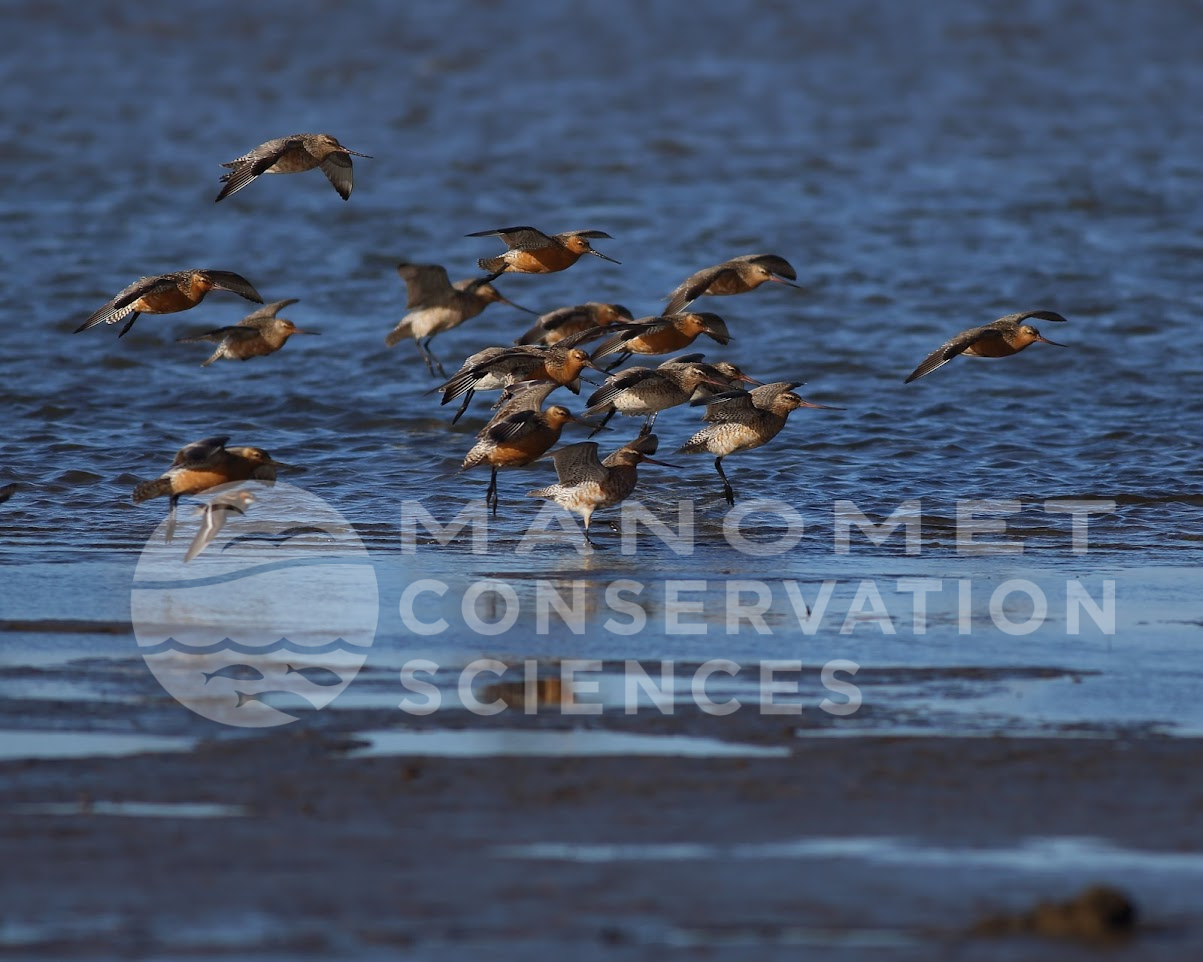
#122: Spotted Sandpiper
Photographed: Big Bay, Michigan | Photographer: Brad Winn
Spotted Sandpipers breed across much of the United States and Canada. They can be found nesting along grassy pond edges, fields, and rocky slopes—from our coasts to inland mountain areas. This bird was feeding along a quiet edge of a deep lake near rocky habitat where Spotted Sandpipers are known to breed. The females tend to be more brightly plumaged than males, as is common in other polyandrous species. Similarly, the males typically handle all incubation and raising of the young, while females re-nest with a second male. The species exhibits a near-constant bobbing motion as it walks, which helps identify them even at a distance.
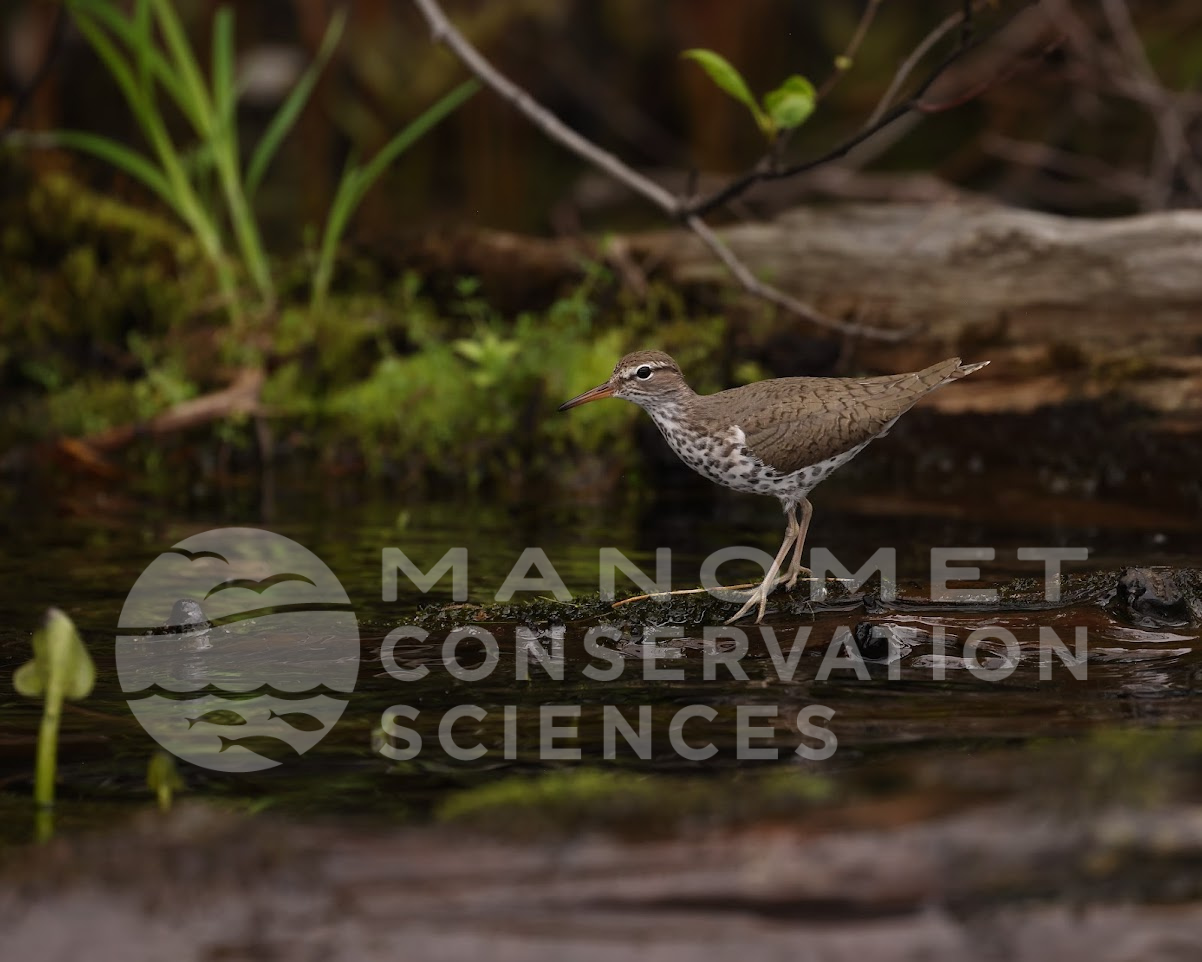
#123: Ruddy Turnstone
Photographed: Prince Edward Island, Canada | Photographer: Brad Winn
Ruddy Turnstones are one of Manomet Conservation Sciences’ flagship species, selected for targeted conservation attention and elevated research focus.
Ruddy Turnstones are opportunistic feeders that will eat almost anything. This young bird, on its first migration south from a nest somewhere along an Arctic gravel shore or dry riverbank, was found feeding on crab parts left by a Herring Gull on Prince Edward Island, Canada. Unfortunately, populations of these stunning shorebirds have declined sharply in recent decades, though the exact reasons remain unclear. They rely heavily on horseshoe crab eggs in the spring to build up fat reserves before their final migration leg to Arctic nesting grounds. However, horseshoe crab numbers have been severely reduced due to their use as bait and the harvesting of their blood for medical contamination testing.
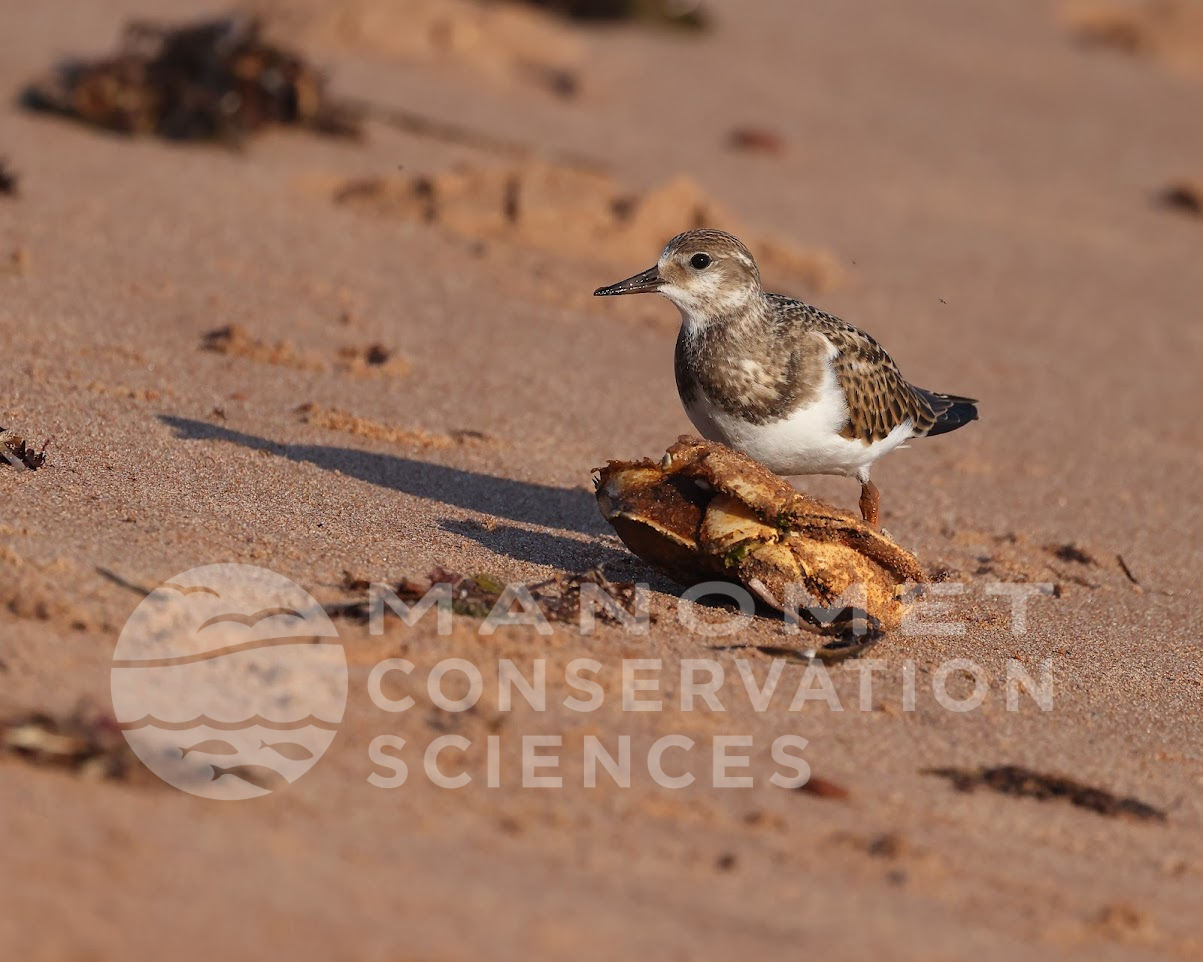
#124: Whimbrel
Photographed: Rockefeller Wildlife Refuge, Louisiana | Photographer: Brad Winn
Whimbrel are one of Manomet Conservation Sciences’ flagship species, selected for targeted conservation attention and elevated research focus.
Whimbrel fly low over Louisiana’s Rockefeller Wildlife Refuge to roost on protected saltmarsh and beach. After wintering on South America’s north coast, they stop over here in April for about a month, feeding on crawfish in rice fields by day and flying to the coast at night. In early May, they head to nest in northwestern Canada and Alaska. Their return begins with a flight east across the Canadian Arctic to saltmarshes in New England and the Maritimes. After feeding for about a month in August and September, building bodyweight needed for sustained flight, these Whimbrel will fly non-stop to the coastal mangroves of Venezuela, Suriname, Guiana, or Brazil.
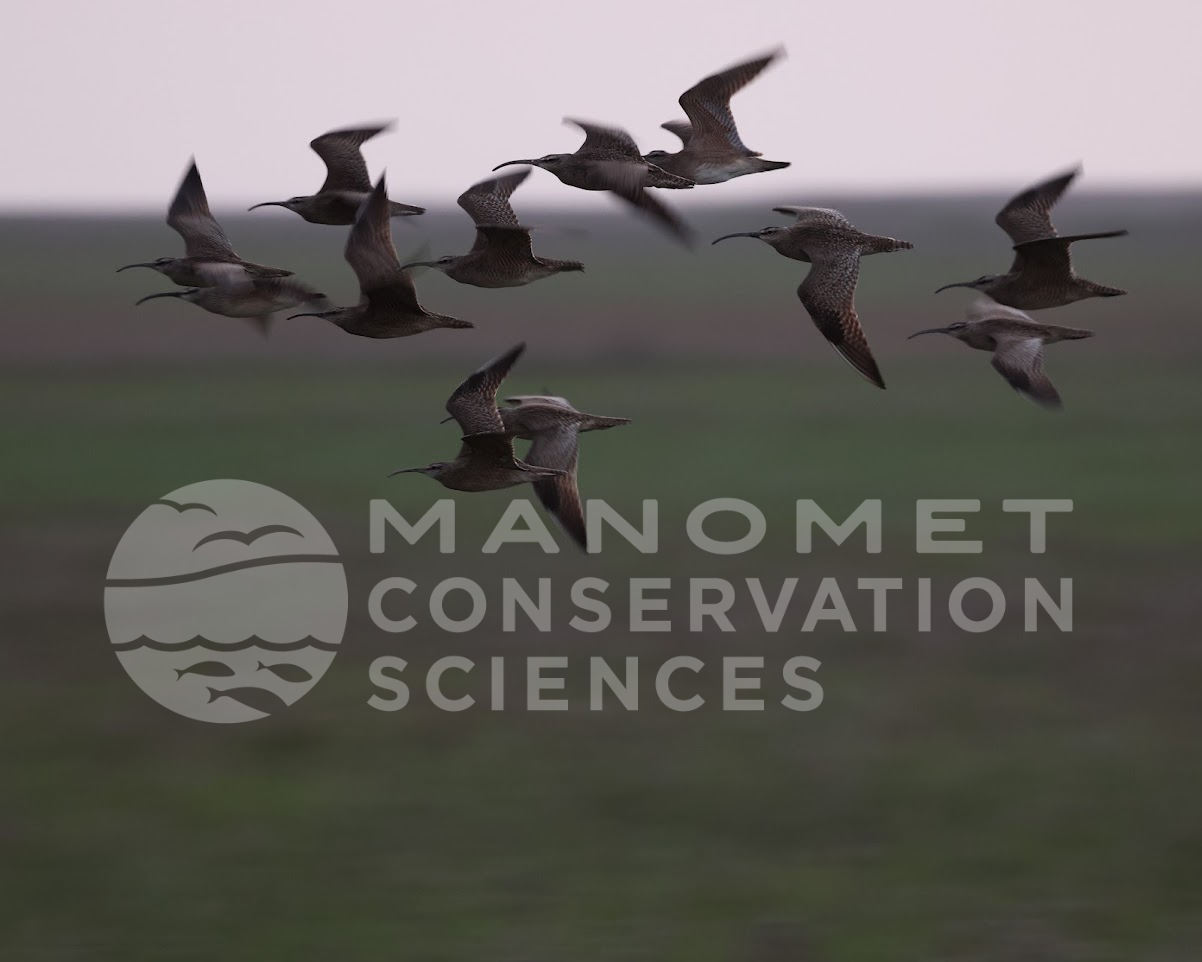
#125: Long-billed Curlew
Photographed: Altamaha River Estuary, Georgia | Photographer: Brad Winn
The curlew in this photo is a survivor. It belongs to a group of perhaps as few as twenty individuals that spend the colder months in South Carolina, Georgia, and Florida. Long-billed Curlews were historically very abundant in fall, winter, and early spring along the southeastern U.S. Atlantic Coast before the late 1800s. Unregulated hunting and the sale of many bird species for the meat and feather industries between 1850 and 1930 drove many species to imperilment or extinction—like the now-extinct Eskimo Curlew, Passenger Pigeon, and Carolina Parakeet. Long-billed Curlews, the largest shorebird in all the Americas, exist in greater numbers breeding in western states and the Canadian provinces of Saskatchewan and Manitoba, but the bird in this photograph is a mere relic of a very different time.
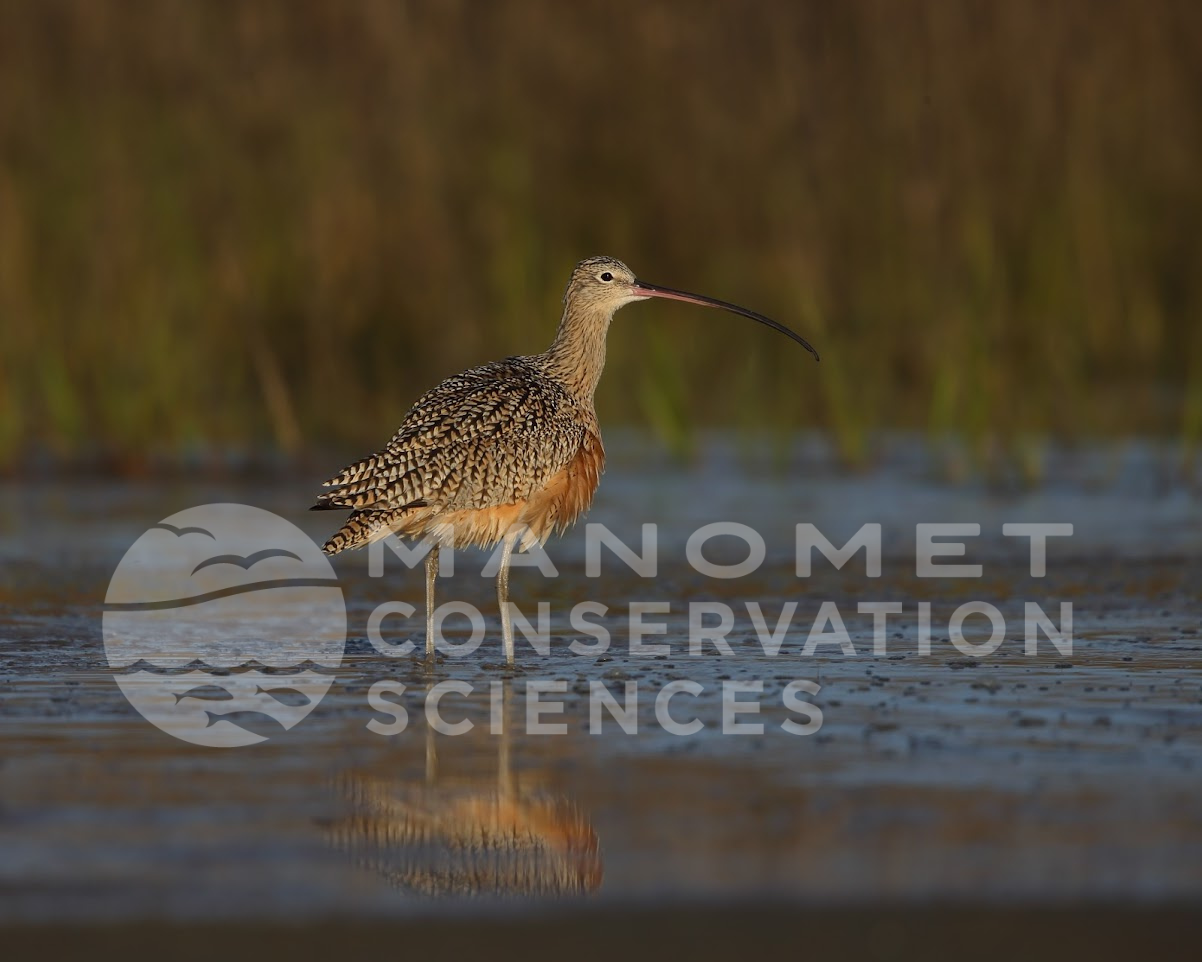
#126: Magellanic Plover
Photographed: El Chalten, Argentina | Photographer: Benjamin M. Clock
The Magellanic Plover is one of Manomet Conservation Sciences’ flagship species, selected for targeted conservation attention and elevated research focus.
This adult Magellanic Plover was foraging along the shore of Lago Argentina near its nest on a gravel bar. This species—distinguished by its unique red iris and pink legs—is found only in Patagonia, nesting along the edges of small, sometimes ephemeral lakes and wintering along the coasts of Chile and Argentina. Recent survey work, supported by Manomet Conservation Sciences, has revealed that there may be as few as 500 of these plovers remaining in the world. The species was recently elevated to Vulnerable status on the IUCN Red List.
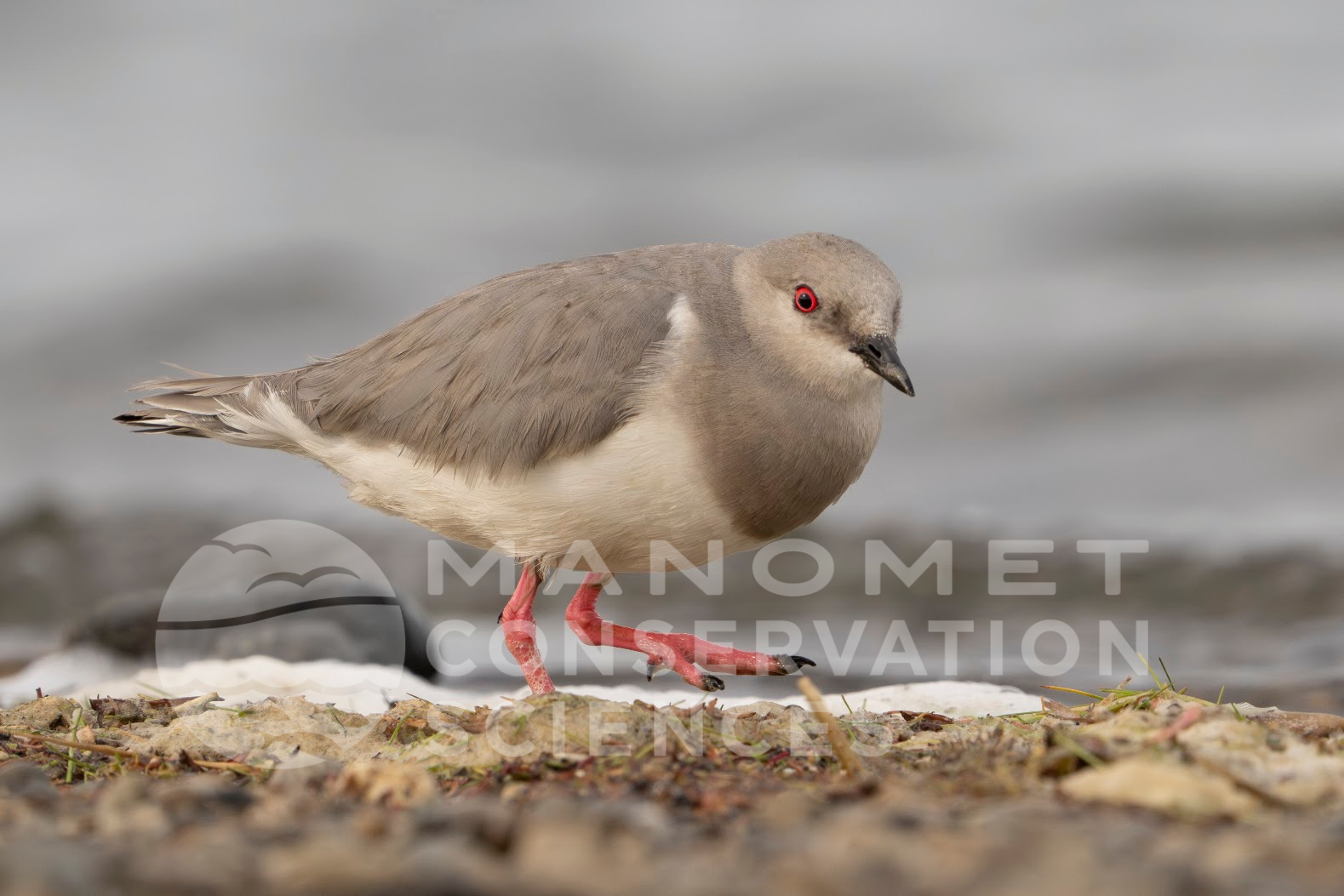
#127: Buff-breasted Sandpiper
Photographed: Utqiagvik, Alaska | Photographer: Benjamin M. Clock
Buff-breasted Sandpipers are one of Manomet Conservation Sciences’ flagship species, selected for targeted conservation attention and elevated research focus.
Often called the “Buffy,” this sandpiper is unlike any other in North America, with golden plumage flecked with white and black scallops that blend perfectly with the dry, blond tundra grasses. Buff-breasted Sandpipers use a unique lek mating system, where males gather on tundra “courts” to display. Displays begin with a vigorous upswept wing, flashing bright white undersides to attract distant females. If one approaches, both wings are flashed as he tips back, puffs his chest, points his bill upward, and performs an elaborate dance with clicks and wing sounds. Females inspect the dance and his plumage—if satisfied, copulation follows; if not, she moves on to watch other competing males.

#128: Red Knot
Photographed: Nome, Alaska | Photographer: Benjamin M. Clock
A Red Knot forages along the seaweed wrack line just after arriving on Alaska’s Seward Peninsula to breed. Red Knots sometimes reach their nesting areas from wintering sites in Mexico early in the spring, only to find the alpine tundra slopes still completely snowbound. In these early days, shorebirds must find food elsewhere and often gather at the coast to refuel after their long migration. Red Knots are becoming increasingly rare on both the Pacific and Atlantic coasts of North and South America. The Atlantic subspecies, called rufa, is one of the few shorebirds federally listed under the U.S. Endangered Species Act. One population trend estimate suggests that rufa Red Knot numbers have declined by more than 90% over the last forty years.
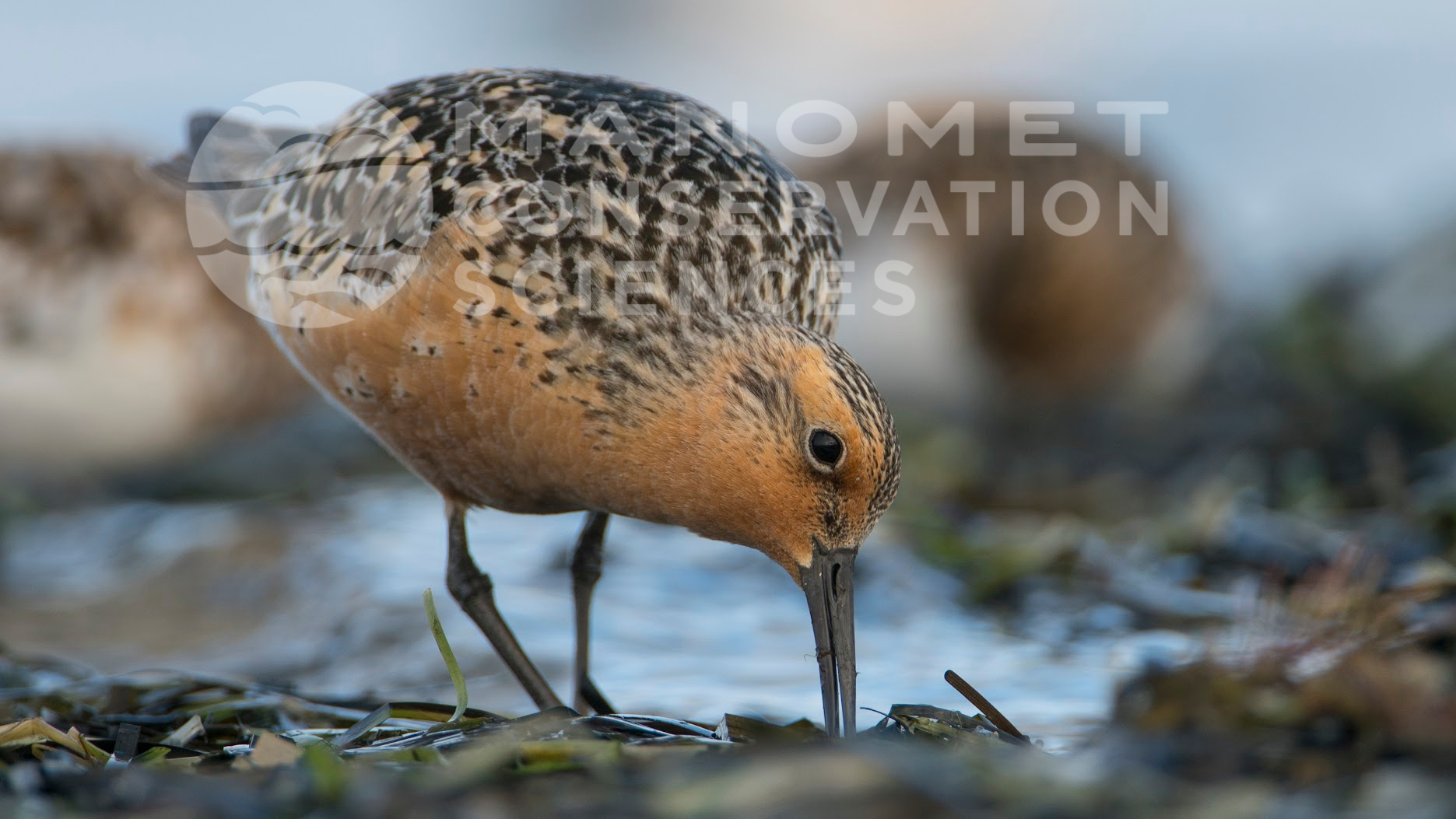
#129: Whimbrel
Photographed: São Luís, Maranhão, Brazil | Photographer: Benjamin M. Clock
In the mangrove forests of northern Brazil, Whimbrel forage on extensive mudflats along channels that weave through the forest. At low tide, mudflats are exposed, allowing Whimbrel to search for their favorite food—Fiddler Crabs. When the tide rises and covers their foraging habitat, the birds depart for roosting areas or perch among the mangrove roots and branches to rest and wait it out. Whimbrel spend the majority of their lives in the tropics. As juveniles, they fly over the Atlantic Ocean to the northern coast of South America and remain there for two to
three years before returning to the Arctic to nest for the first time.
Whimbrel are one of Manomet Conservation Sciences’ flagship species, selected for targeted conservation attention and elevated research focus.
